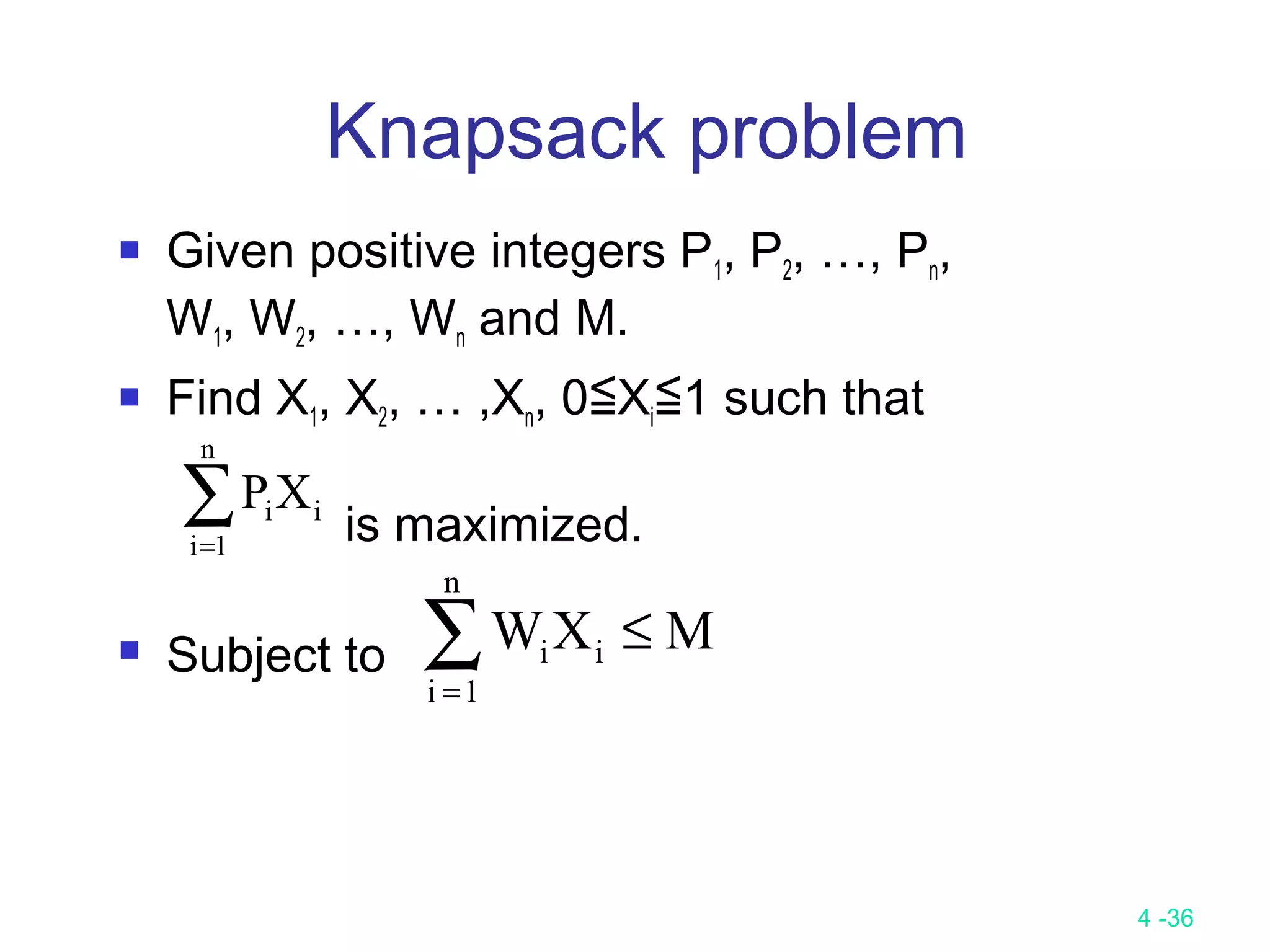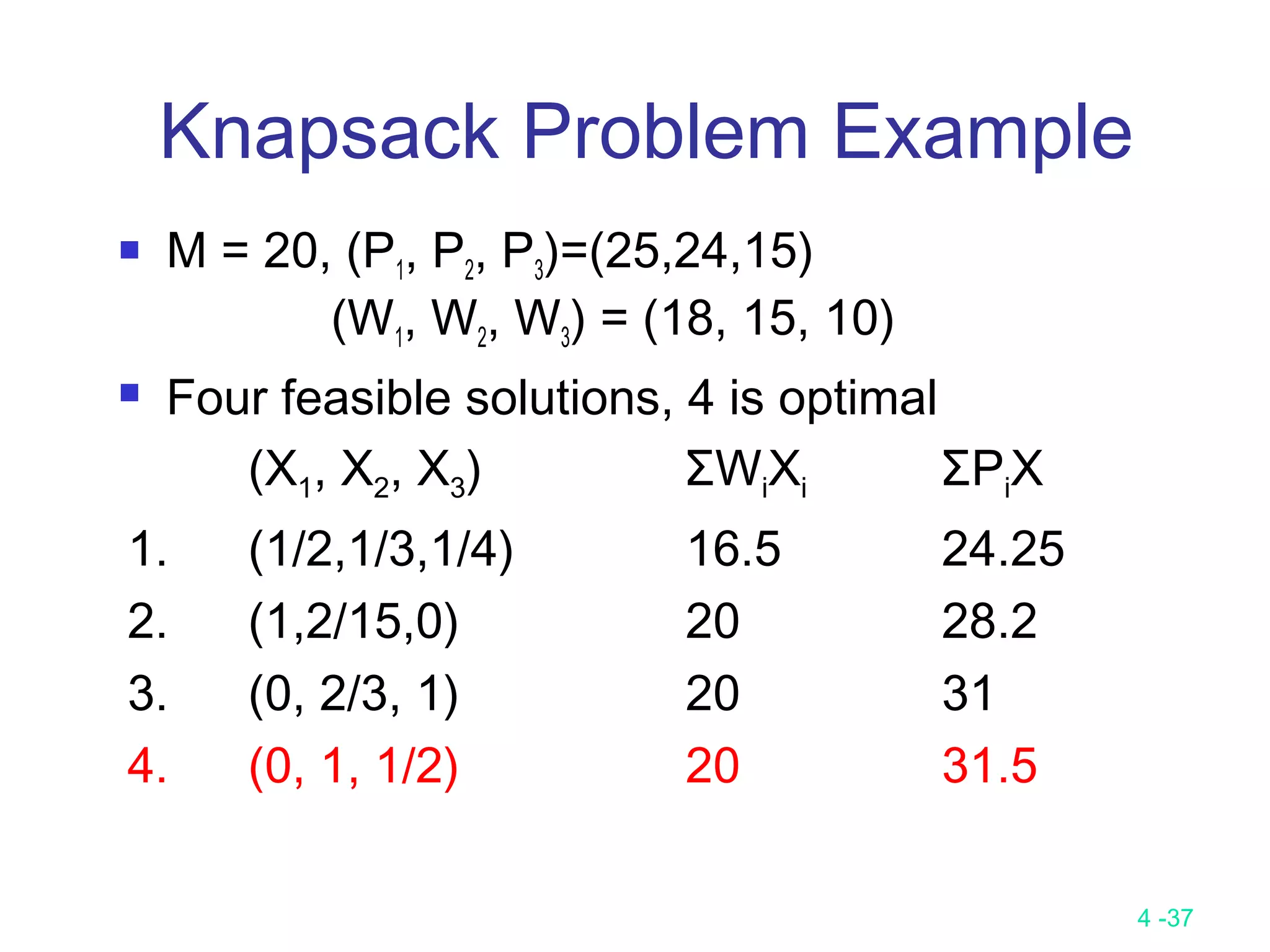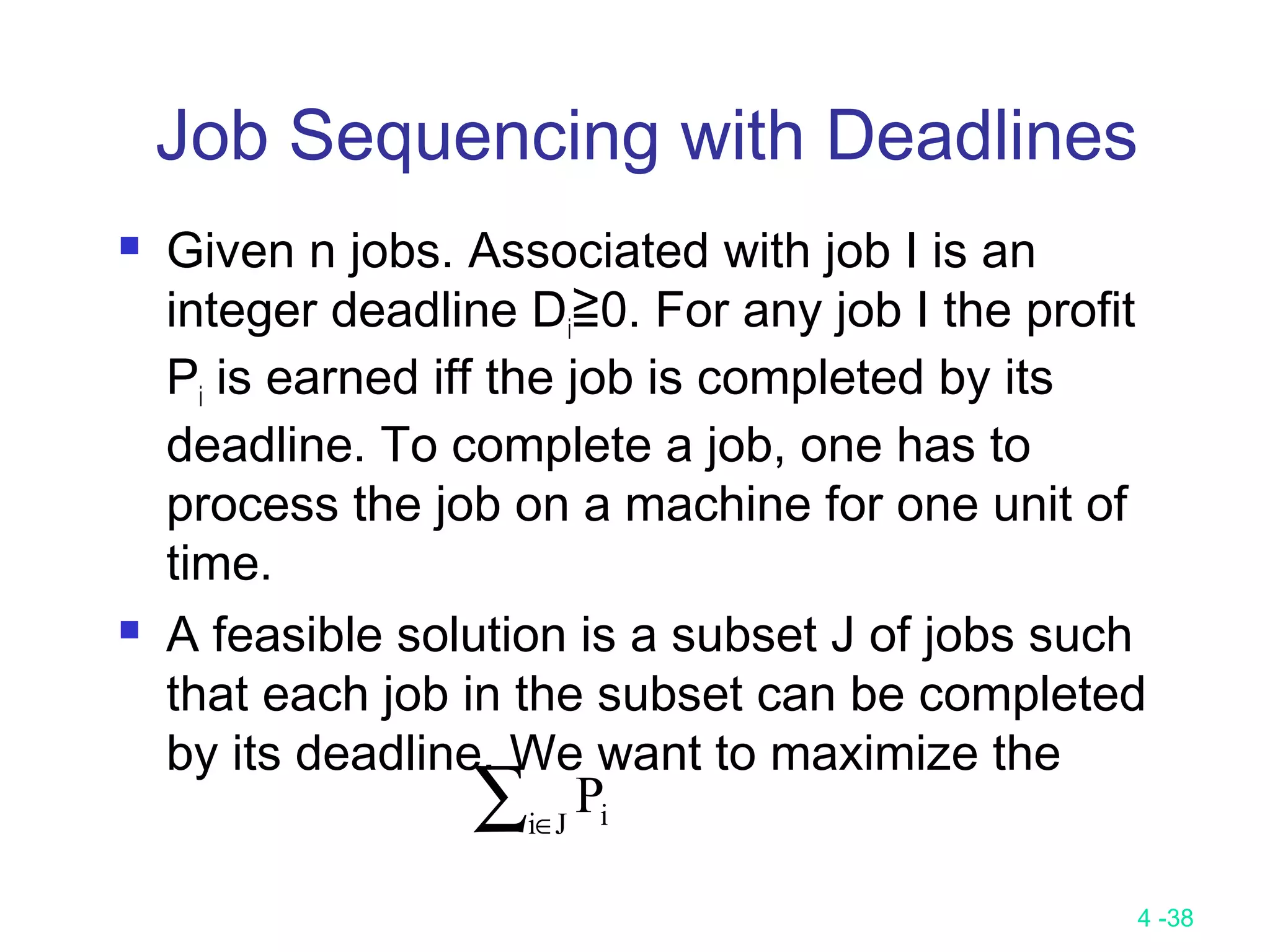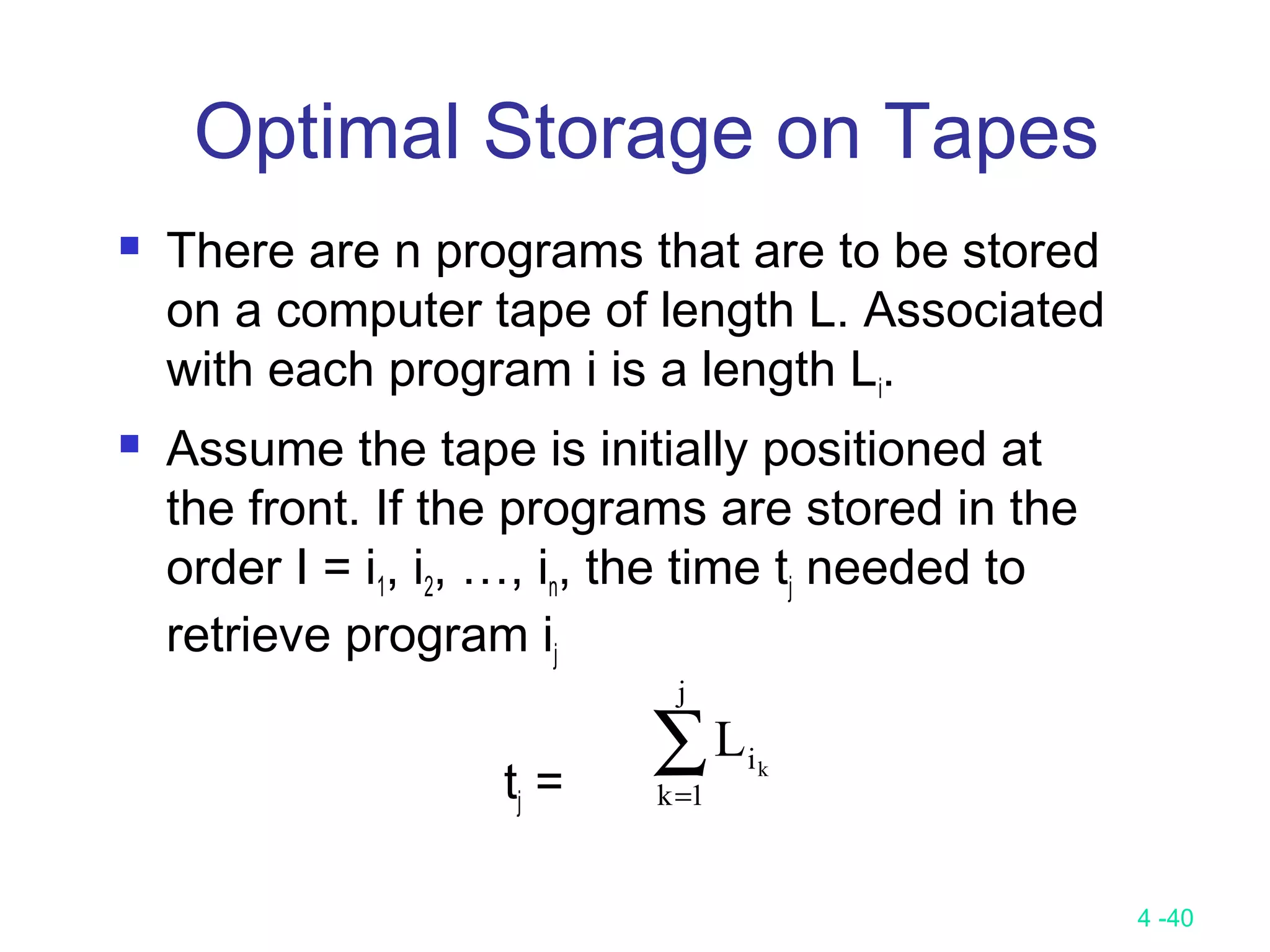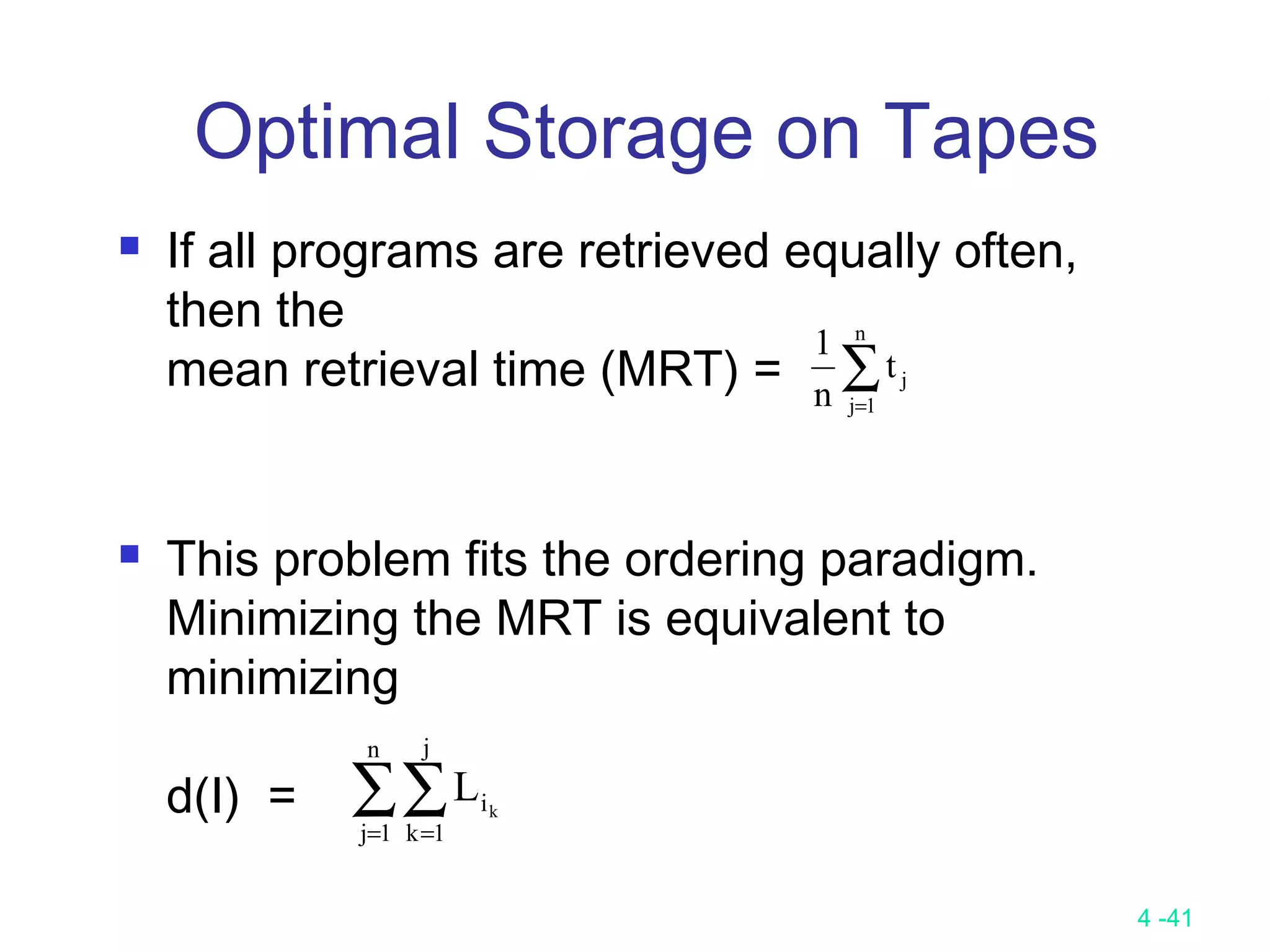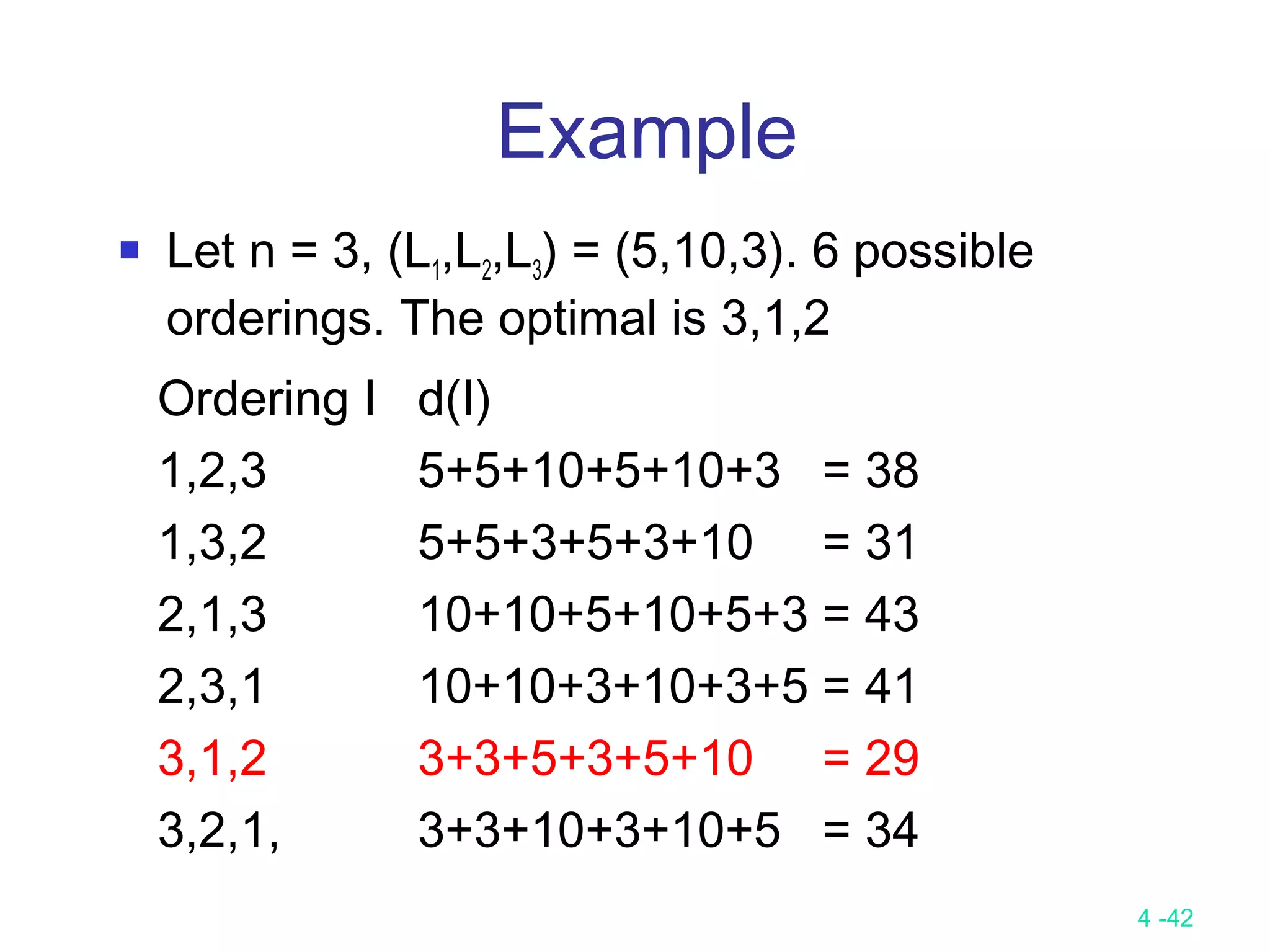The document summarizes various greedy algorithms and optimization problems that can be solved using greedy approaches. It discusses the greedy method, giving the definition that locally optimal decisions should lead to a globally optimal solution. Examples covered include picking numbers for largest sum, shortest paths, minimum spanning trees (using Kruskal's and Prim's algorithms), single-source shortest paths (using Dijkstra's algorithm), activity-on-edge networks, the knapsack problem, Huffman codes, and 2-way merging. Limitations of the greedy method are noted, such as how it does not always find the optimal solution for problems like shortest paths on a multi-stage graph.
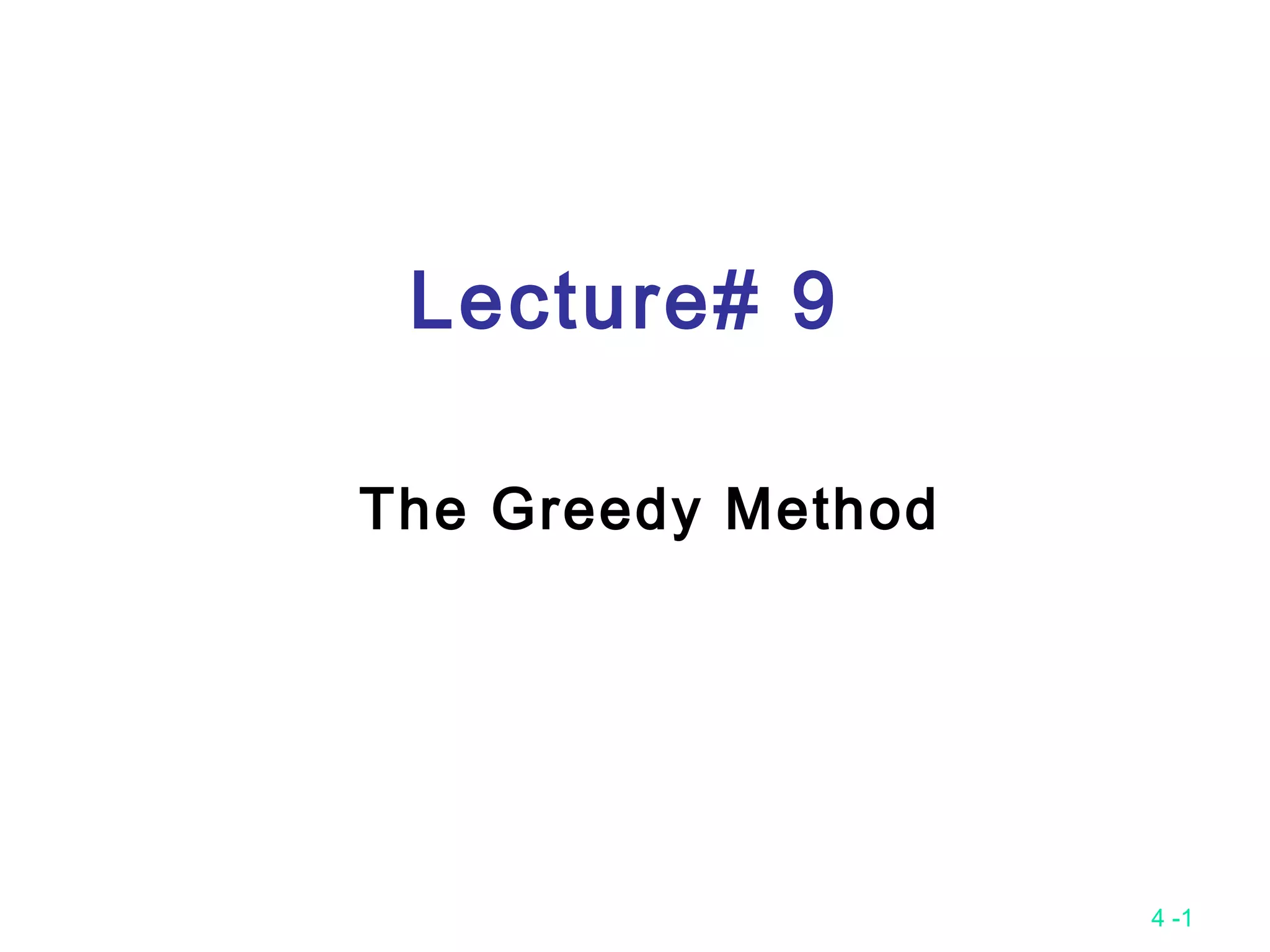
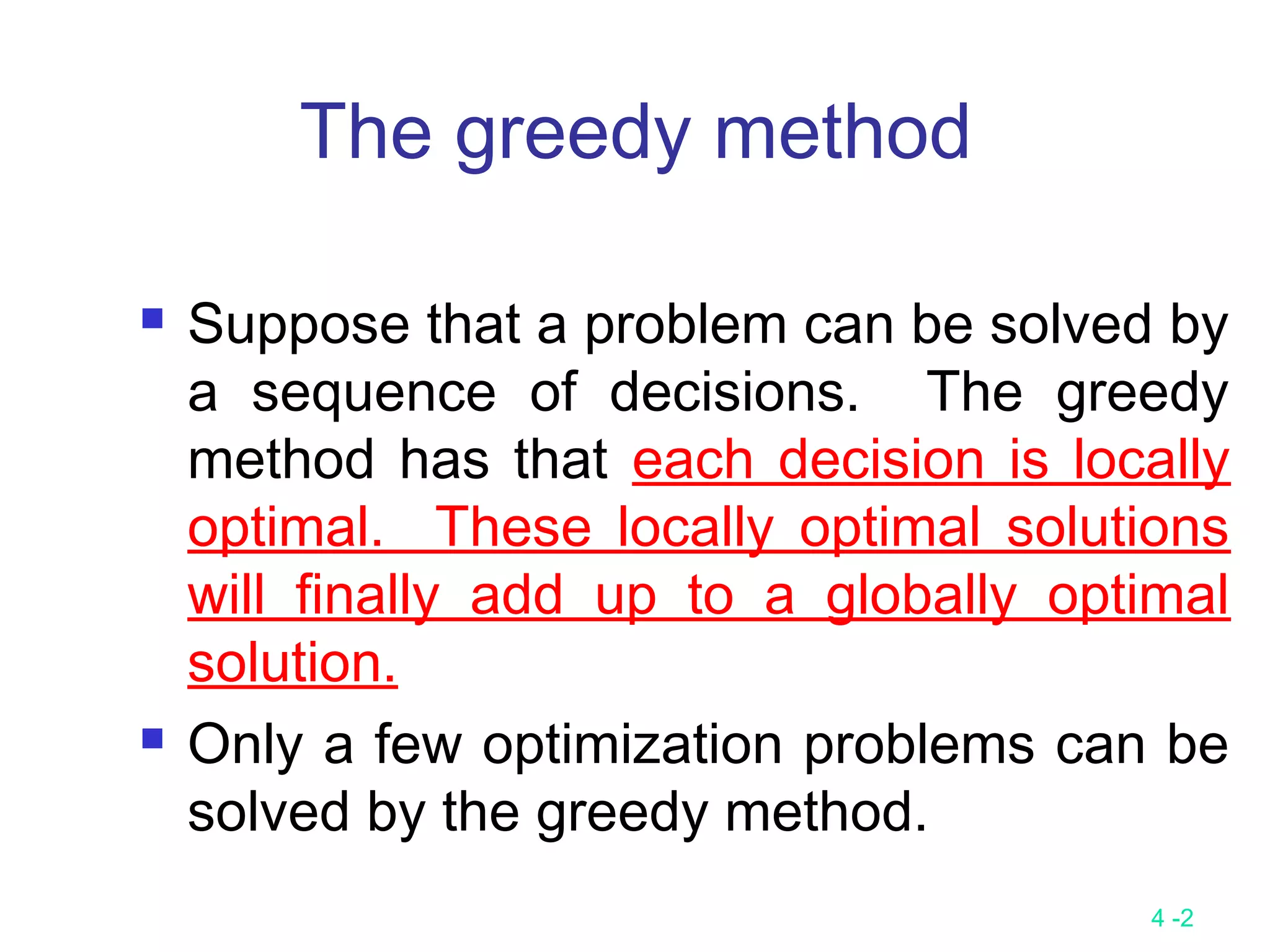
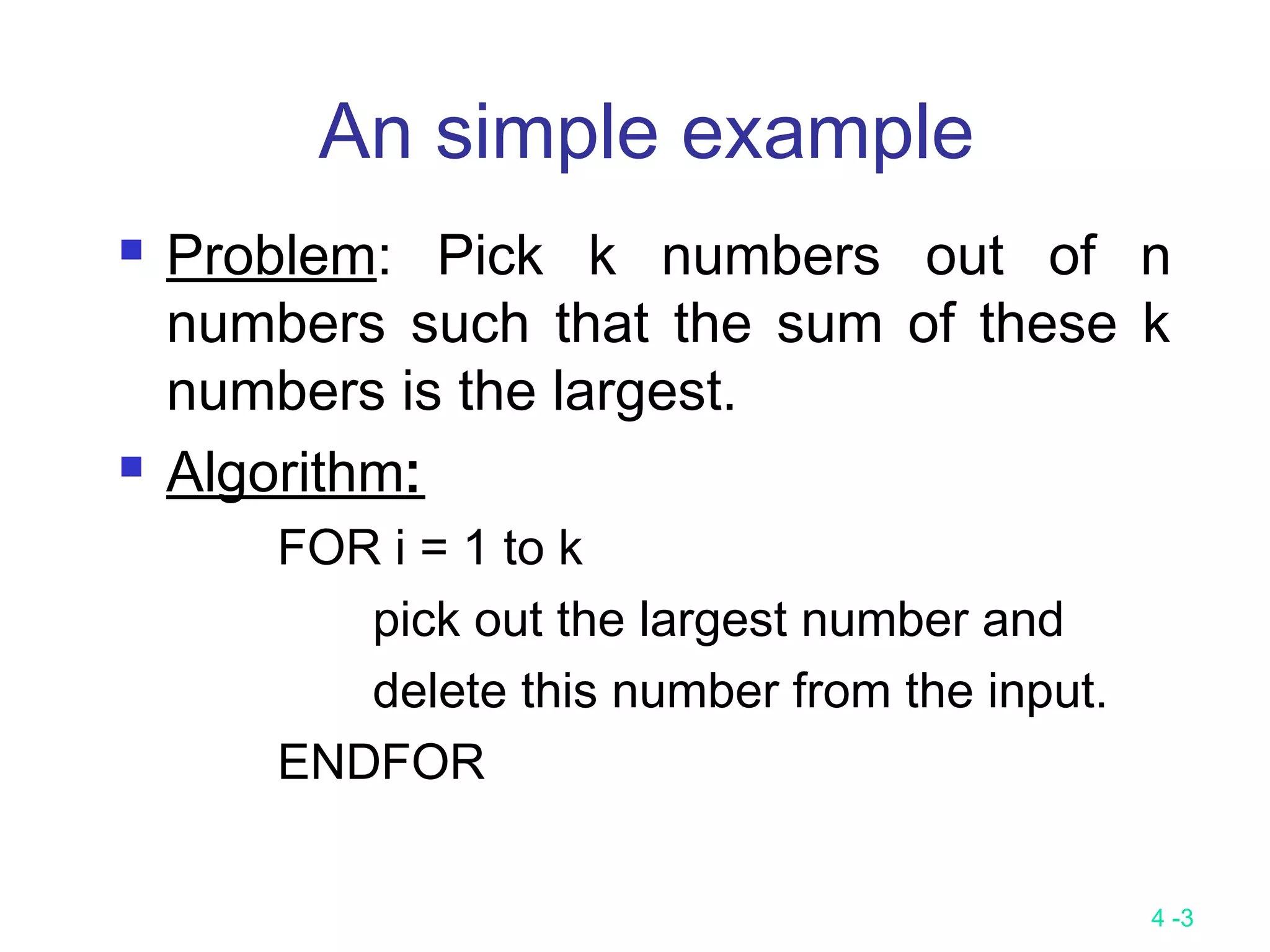
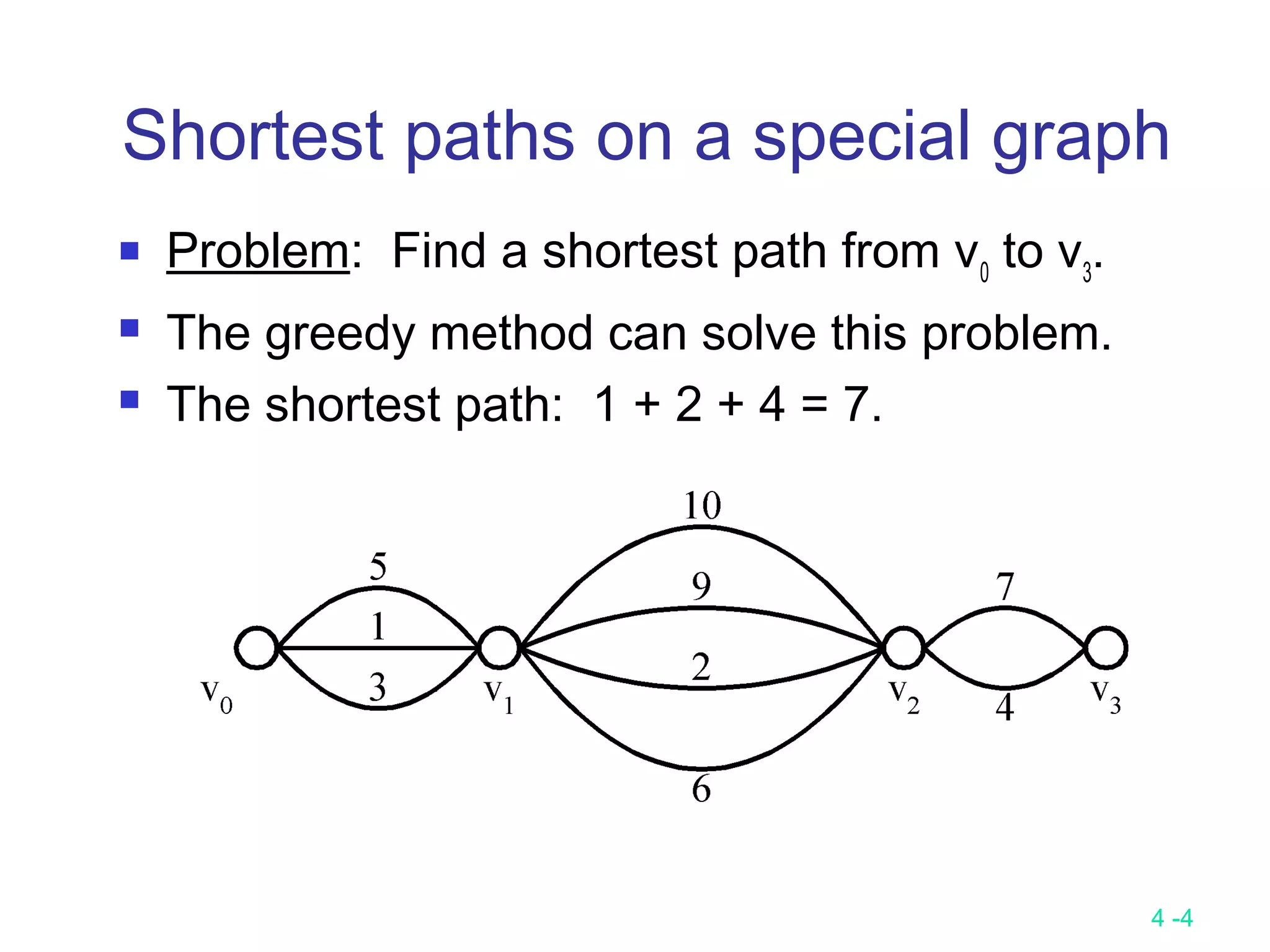
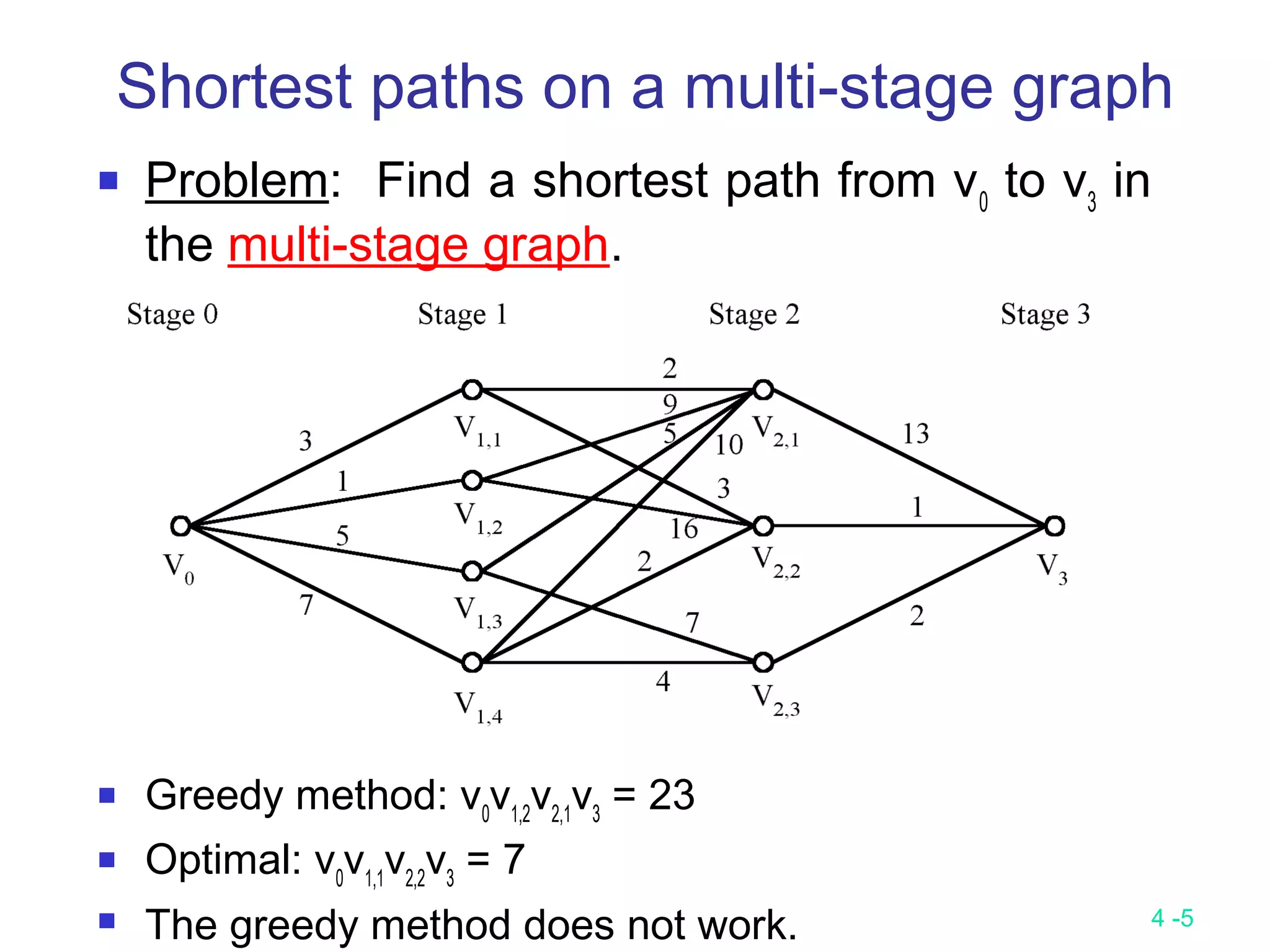
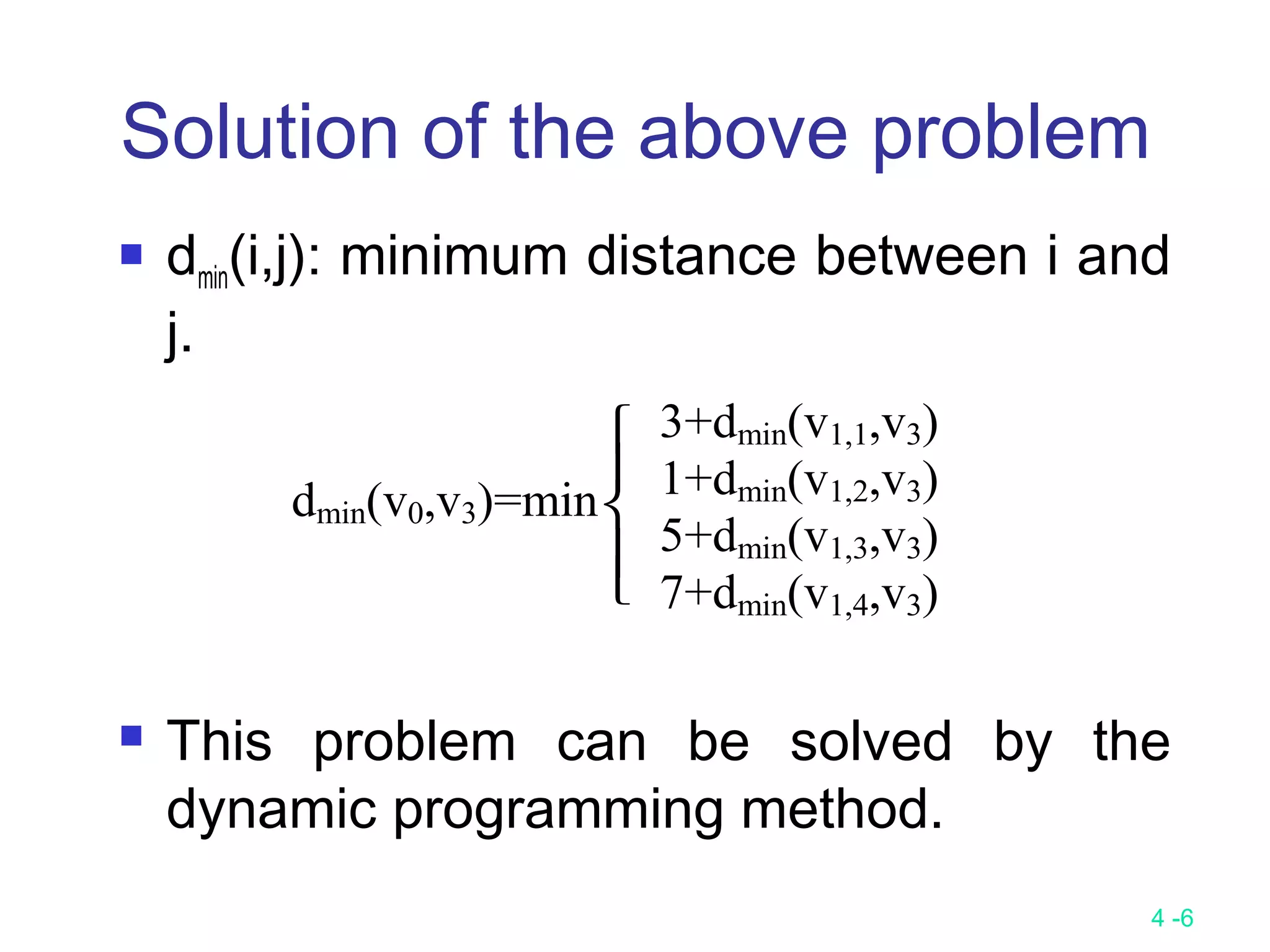

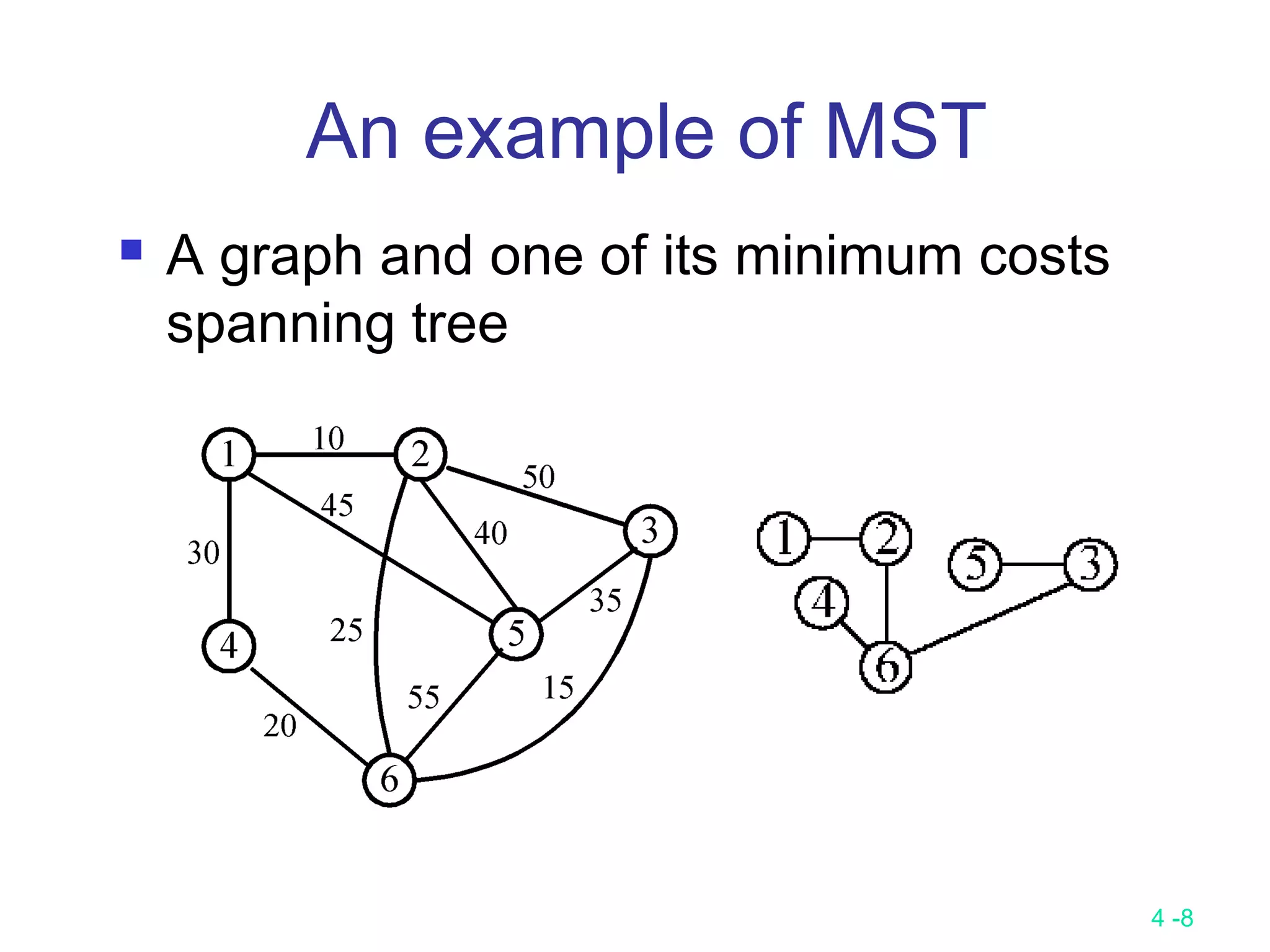
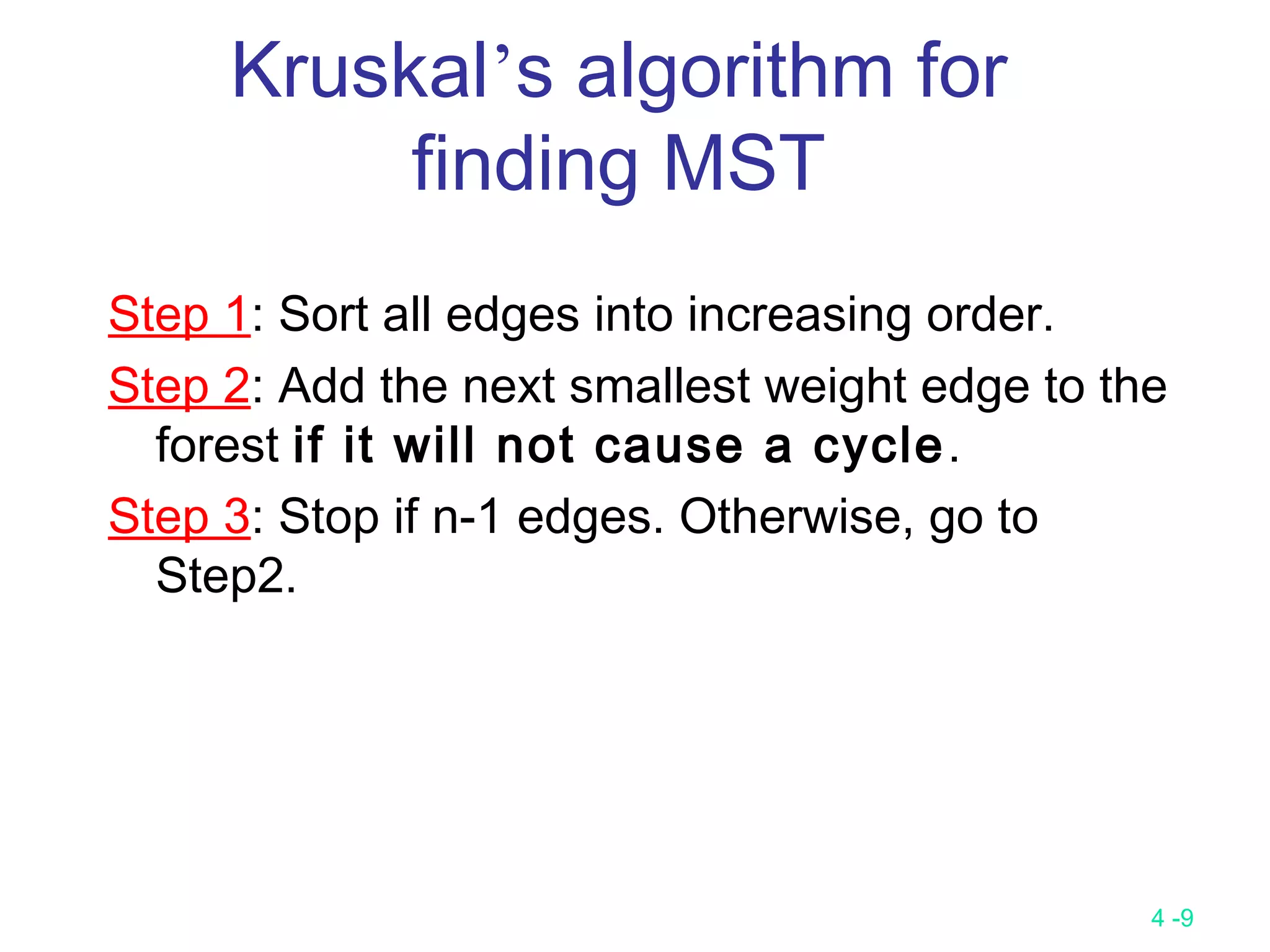
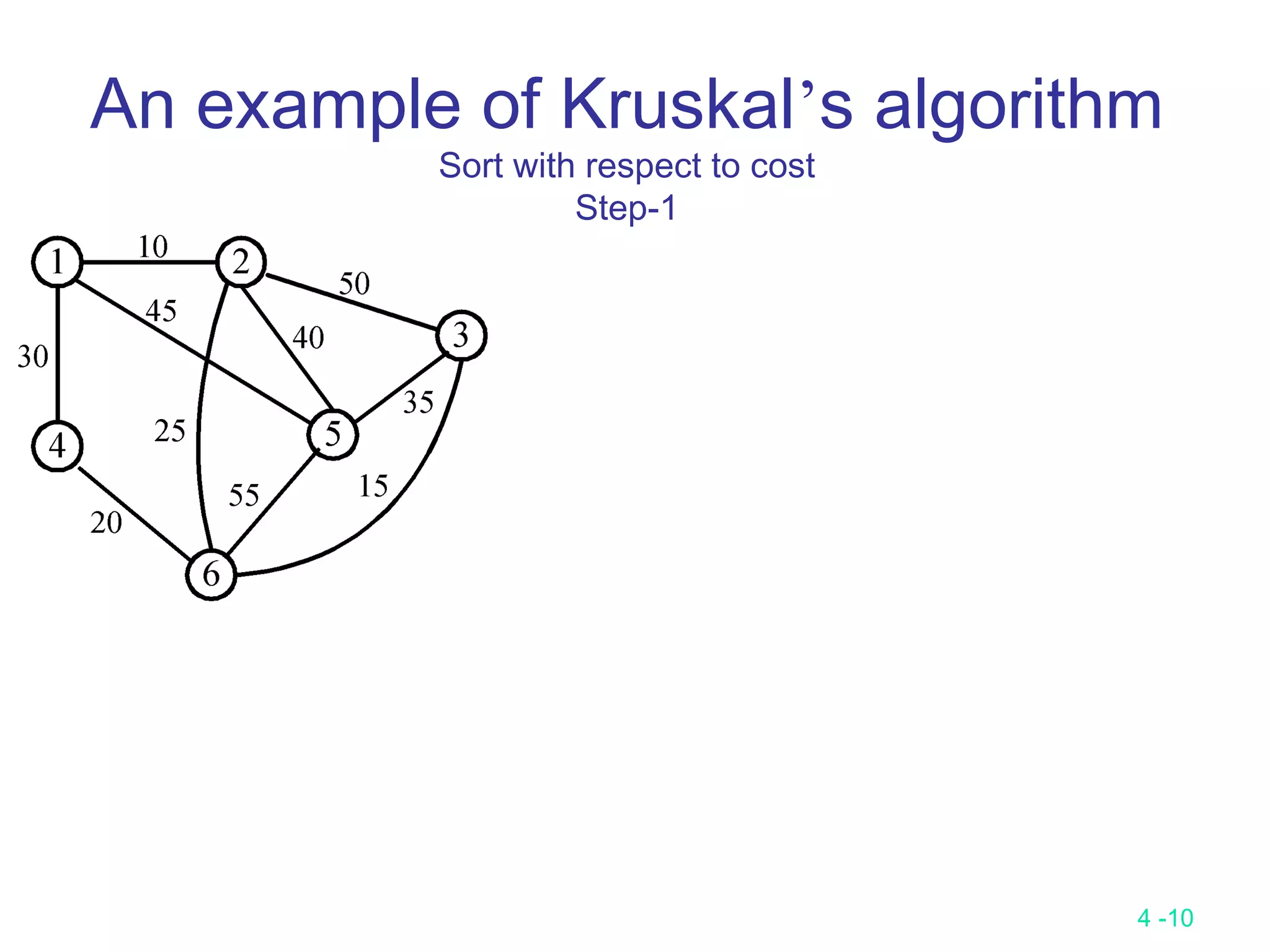
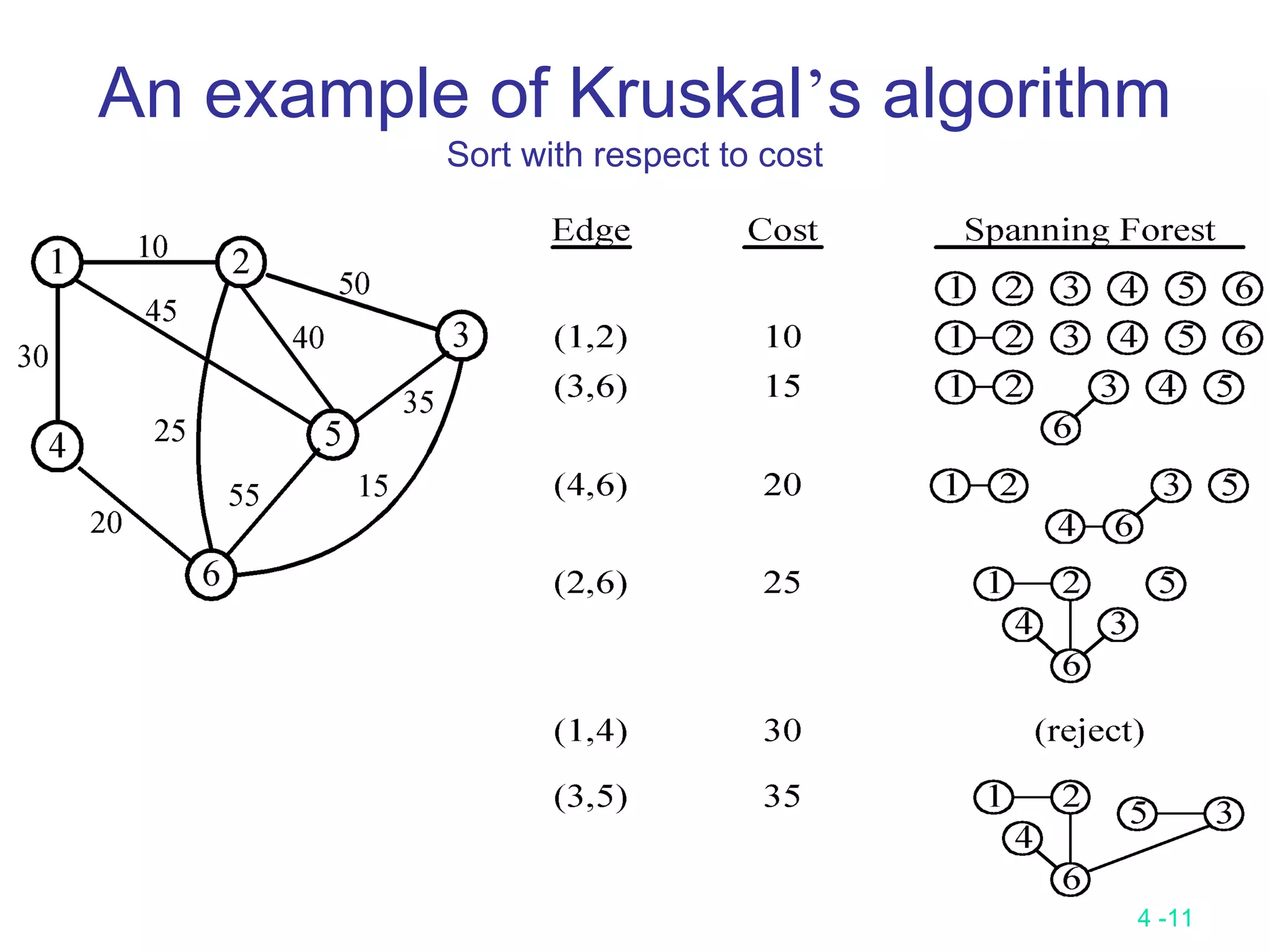
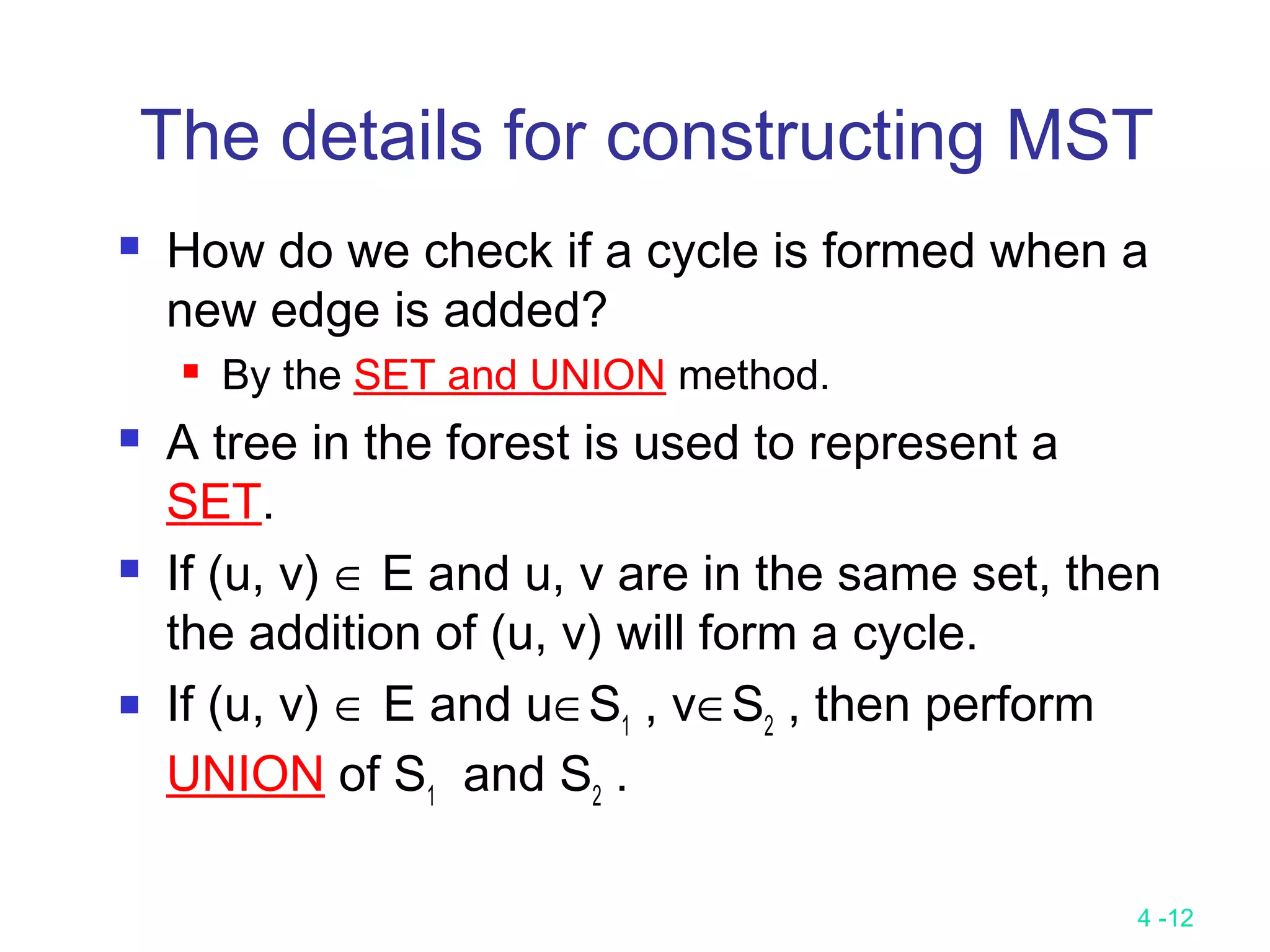
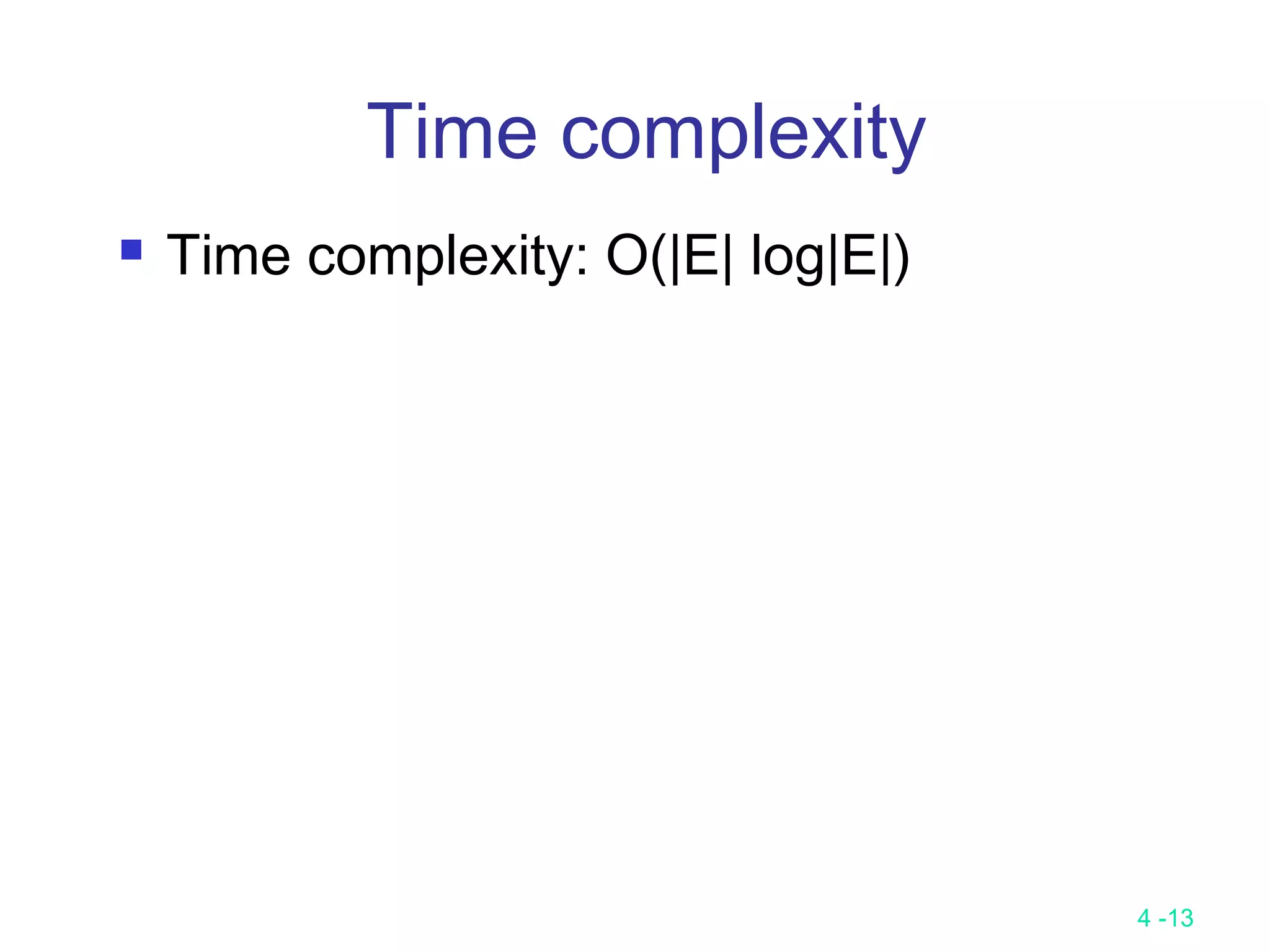
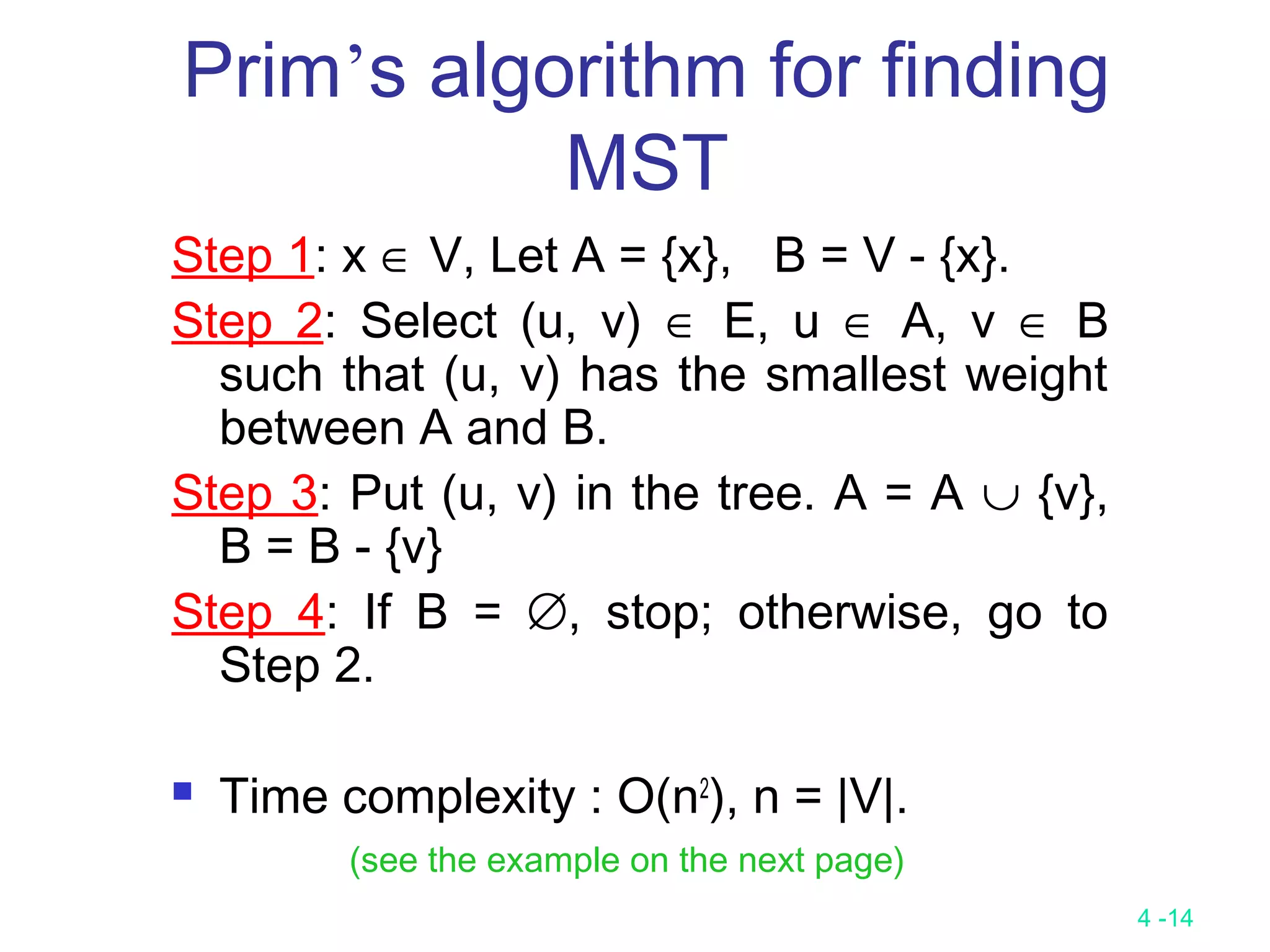
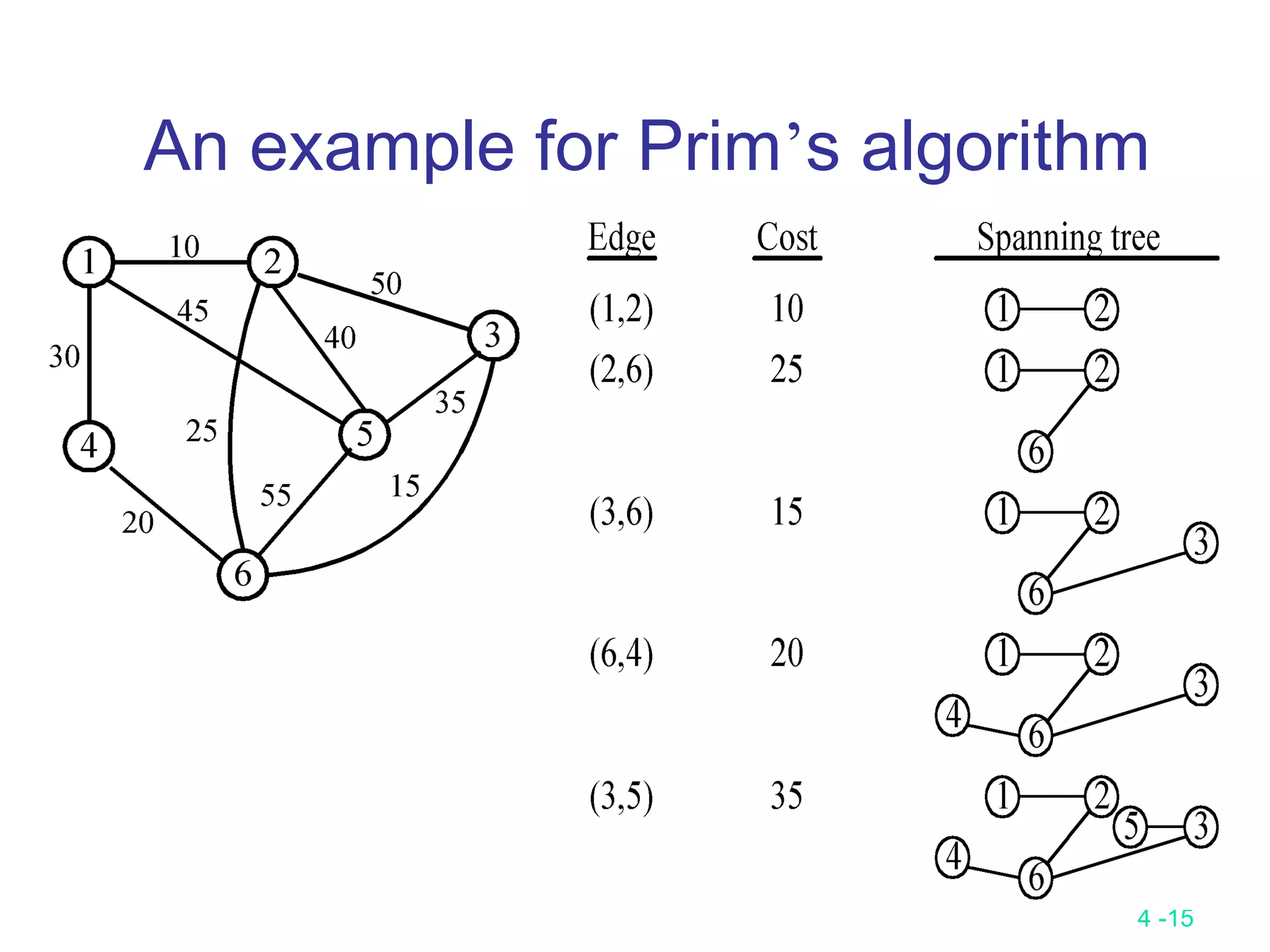

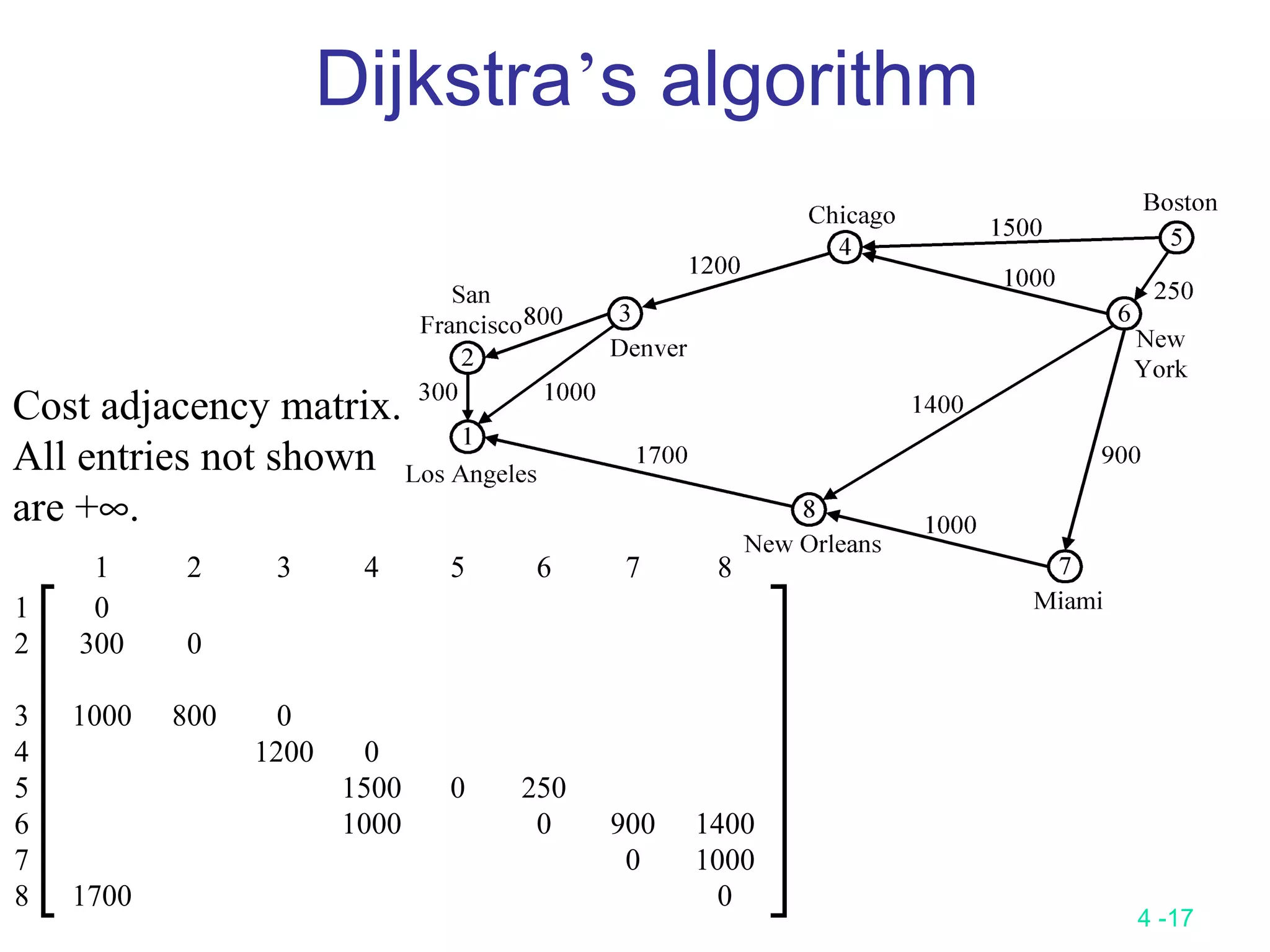
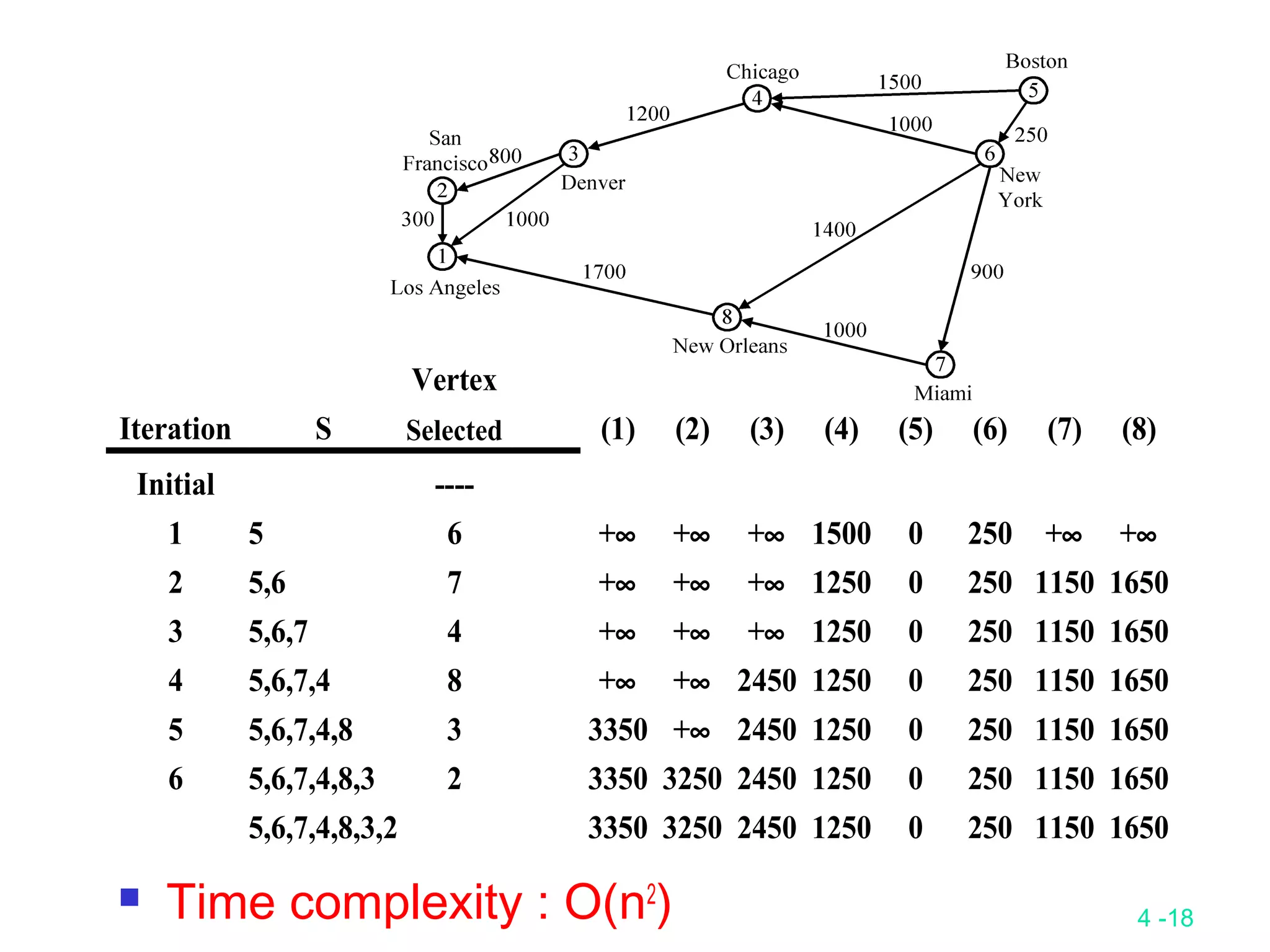
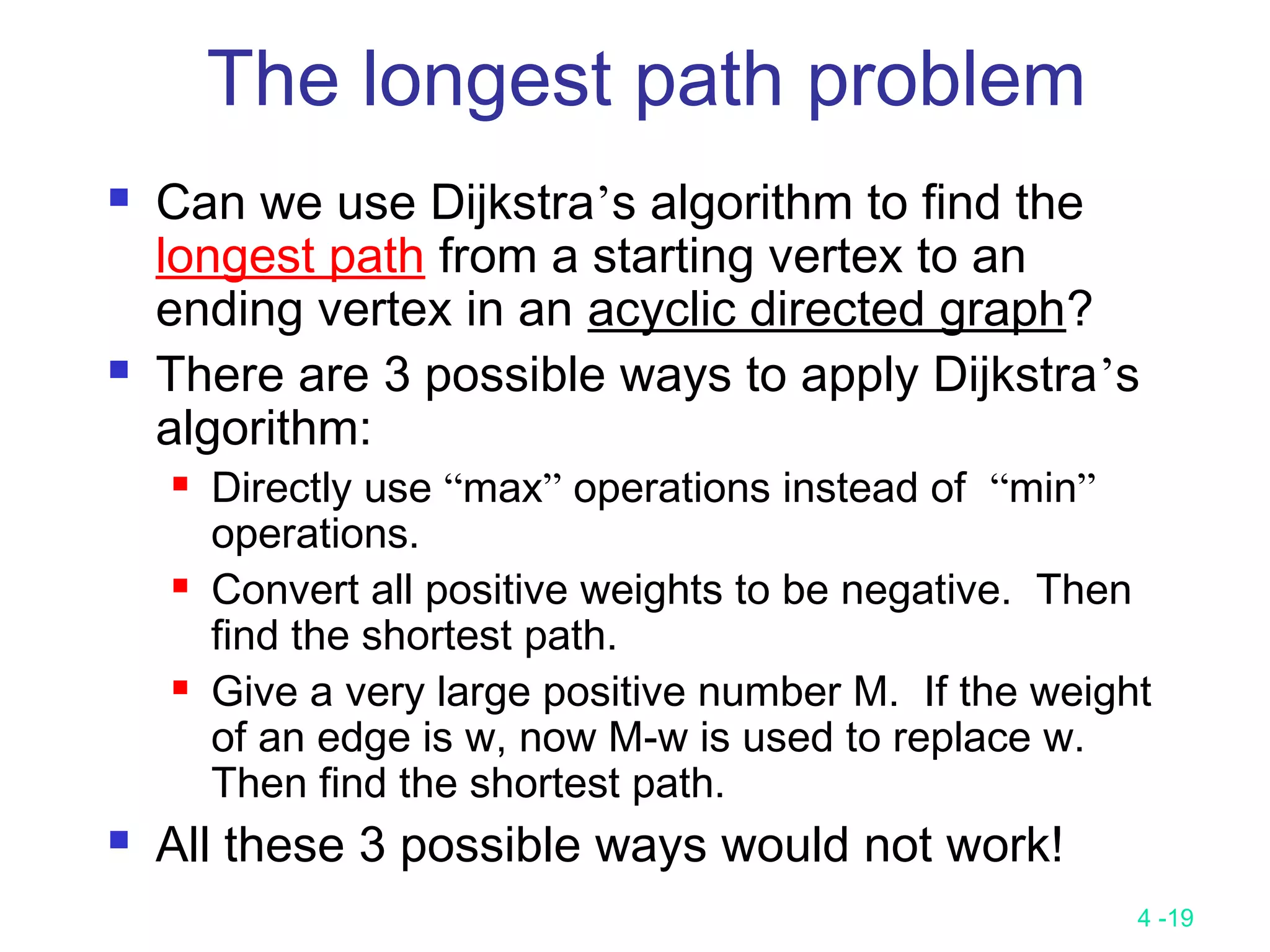


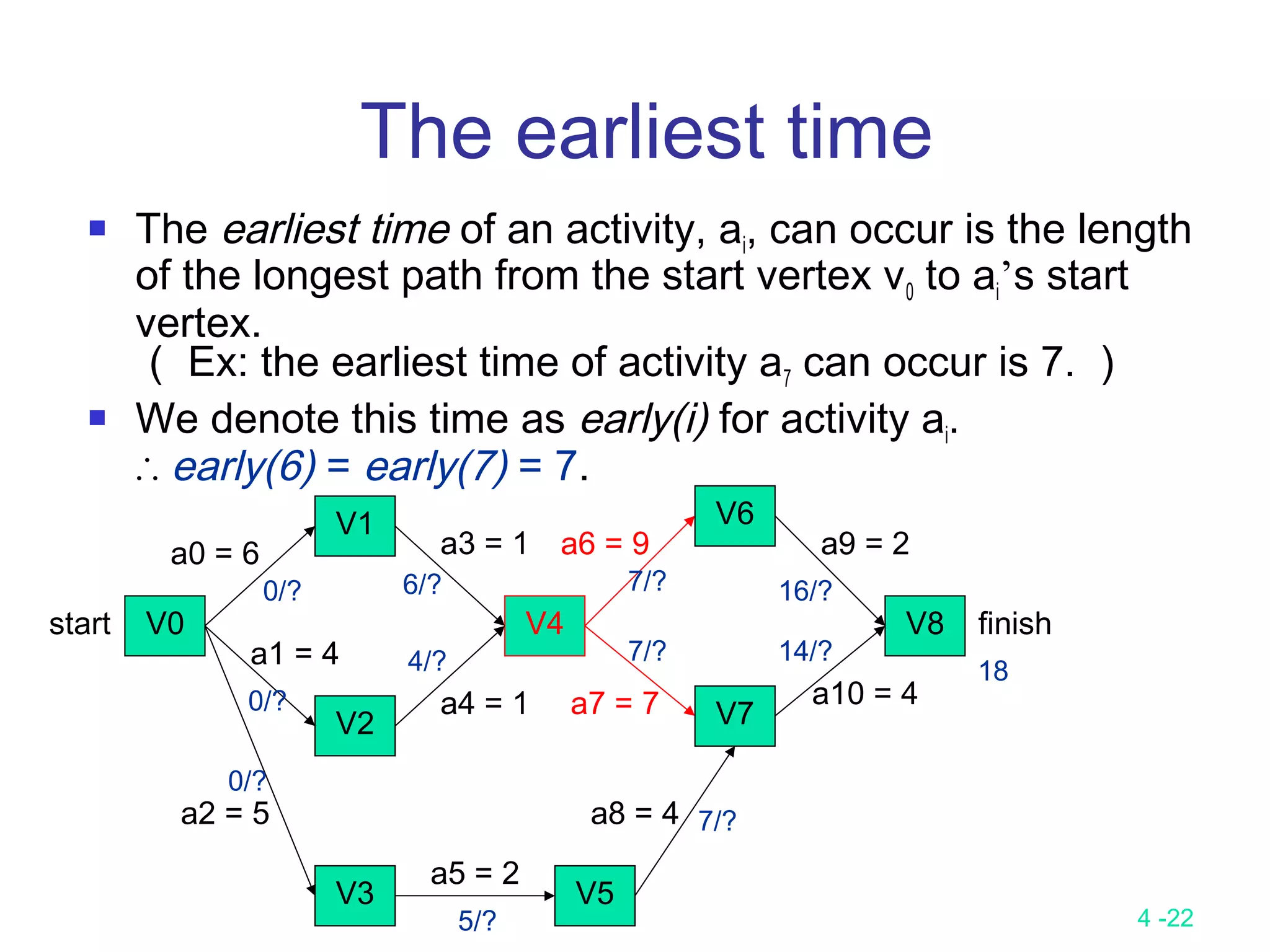
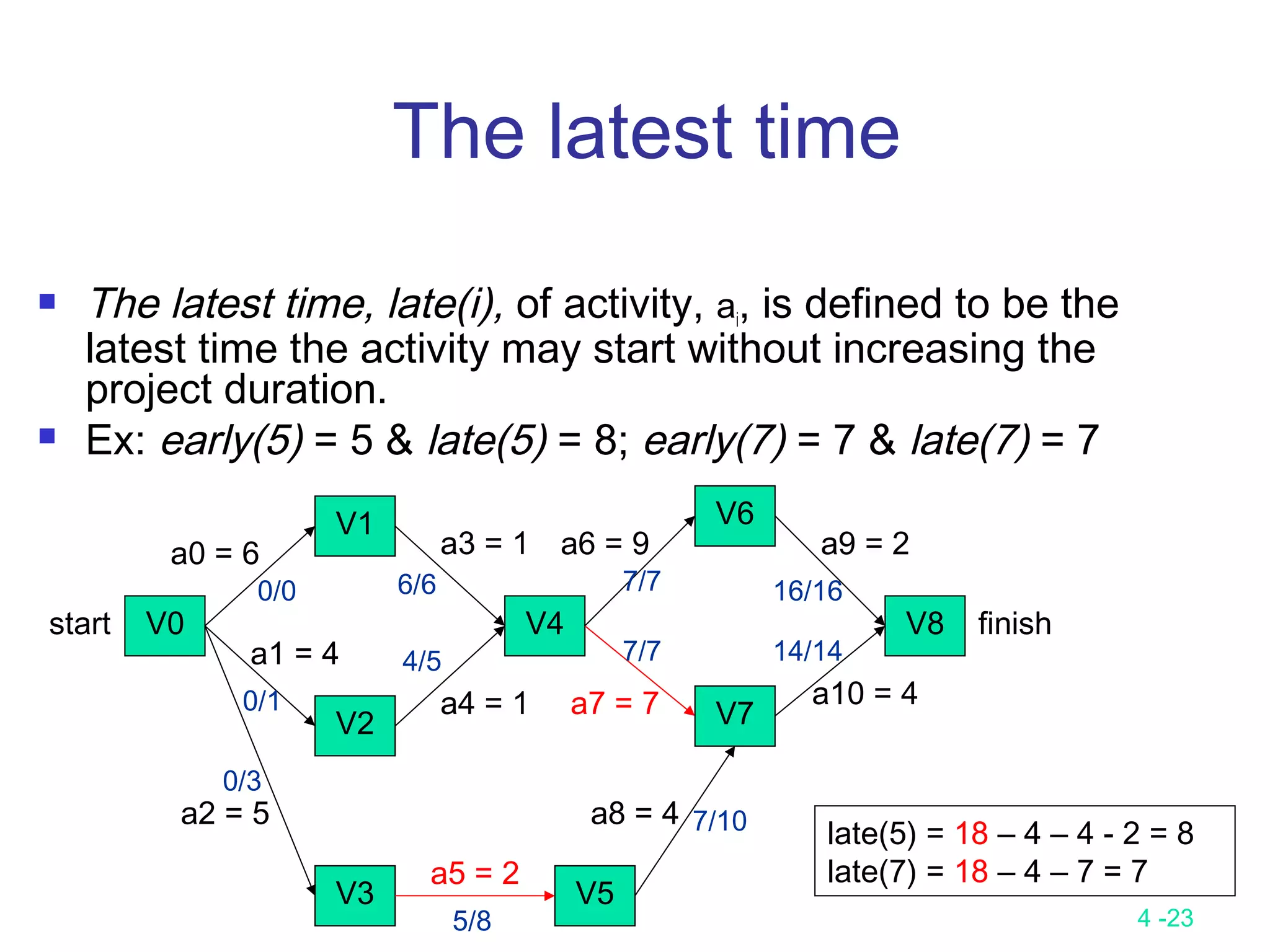
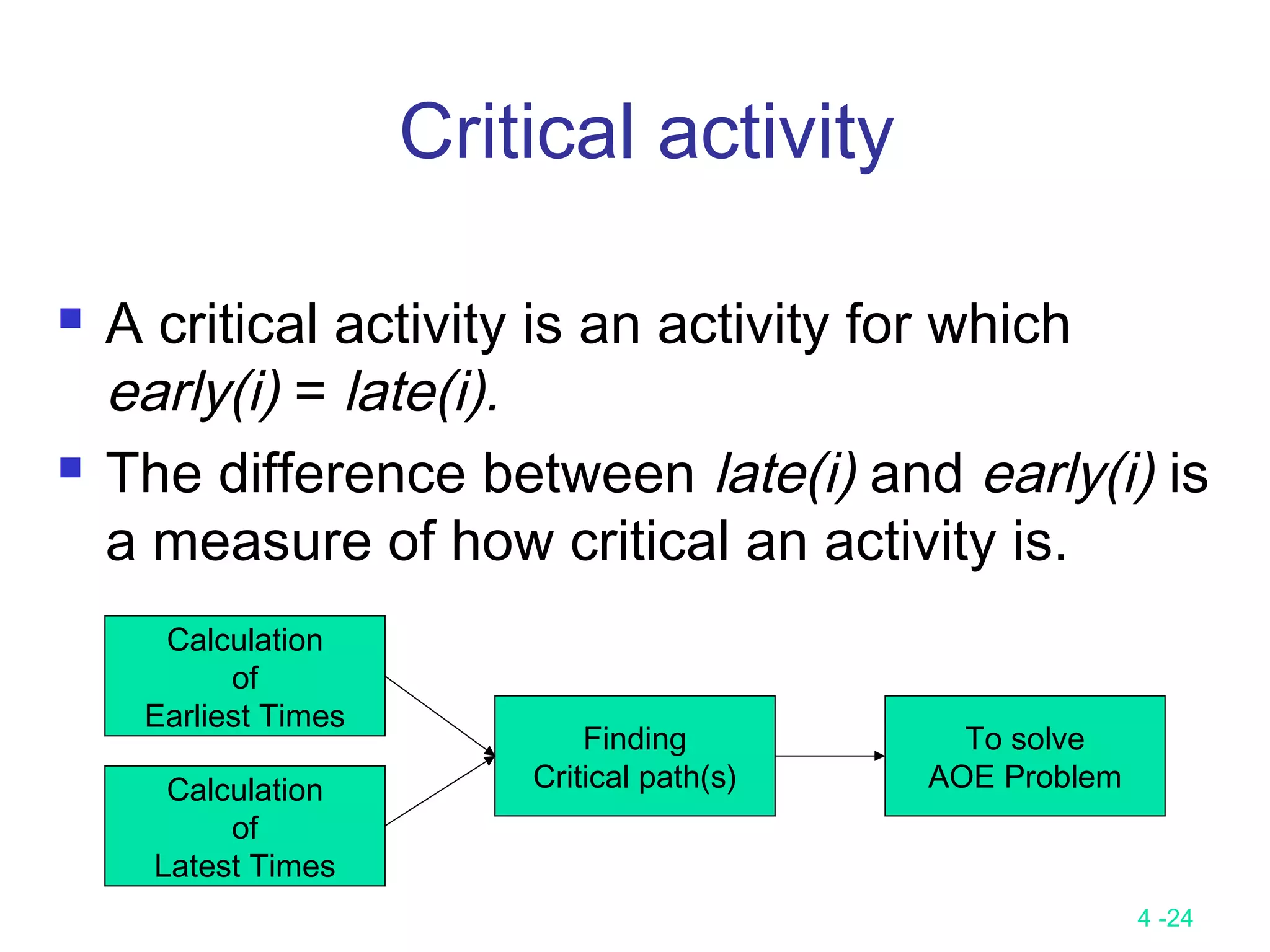
![4 -25
Calculation of Earliest Times
Let activity ai is represented by edge (u, v).
early (i) = earliest [u]
late (i) = latest [v] – duration of activity ai
We compute the times in two stages:
a forward stage and a backward stage.
The forward stage:
Step 1: earliest [0] = 0
Step 2: earliest [j] = max {earliest [i] + duration of (i, j)}
i is in P(j)
P(j) is the set of immediate predecessors of j.](https://image.slidesharecdn.com/lecture9-161204094314/75/Lecture-9-25-2048.jpg)
![4 -26
The backward stage:
Step 1: latest[n-1] = earliest[n-1]
Step 2: latest [j] = min {latest [i] - duration of (j, i)}
i is in S(j)
S(j) is the set of vertices adjacent from vertex j.
latest[8] = earliest[8] = 18
latest[6] = min{earliest[8] - 2} = 16
latest[7] = min{earliest[8] - 4} = 14
latest[4] = min{earliest[6] – 9; earliest[7] – 7} = 7
latest[1] = min{earliest[4] - 1} = 6
latest[2] = min{earliest[4] - 1} = 6
latest[5] = min{earliest[7] - 4} = 10
latest[3] = min{earliest[5] - 2} = 8
latest[0] = min{earliest[1] – 6; earliest[2] – 4; earliest[3] – 5} = 0
Calculation of Latest Times](https://image.slidesharecdn.com/lecture9-161204094314/75/Lecture-9-26-2048.jpg)
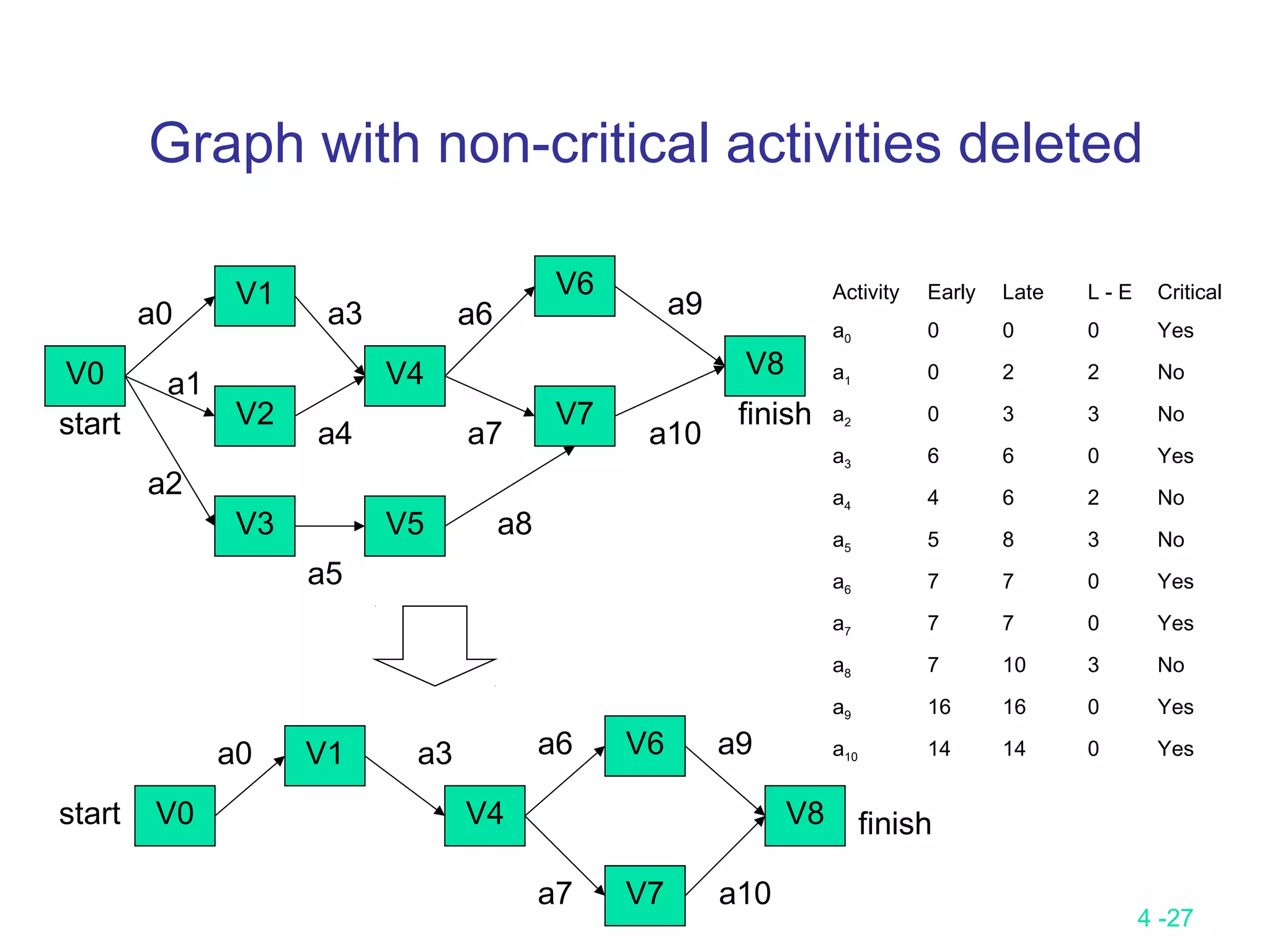
![4 -28
The longest path(critical path) problem
can be solved by the critical path
method(CPM) :
Step 1:Find a topological ordering.
Step 2: Find the critical path.
(see [Horiwitz 1998].)
CPM for the longest path
problem](https://image.slidesharecdn.com/lecture9-161204094314/75/Lecture-9-28-2048.jpg)
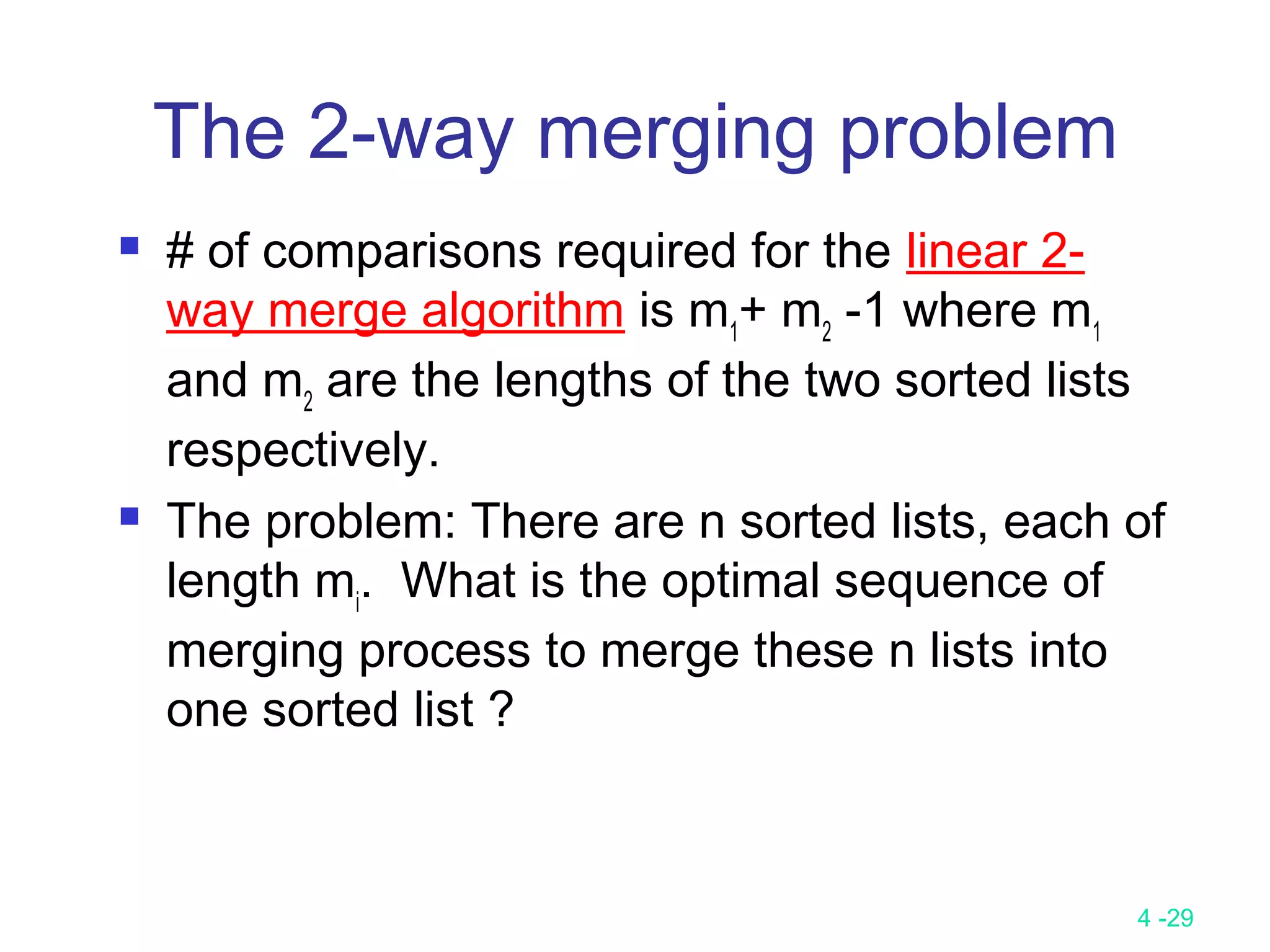
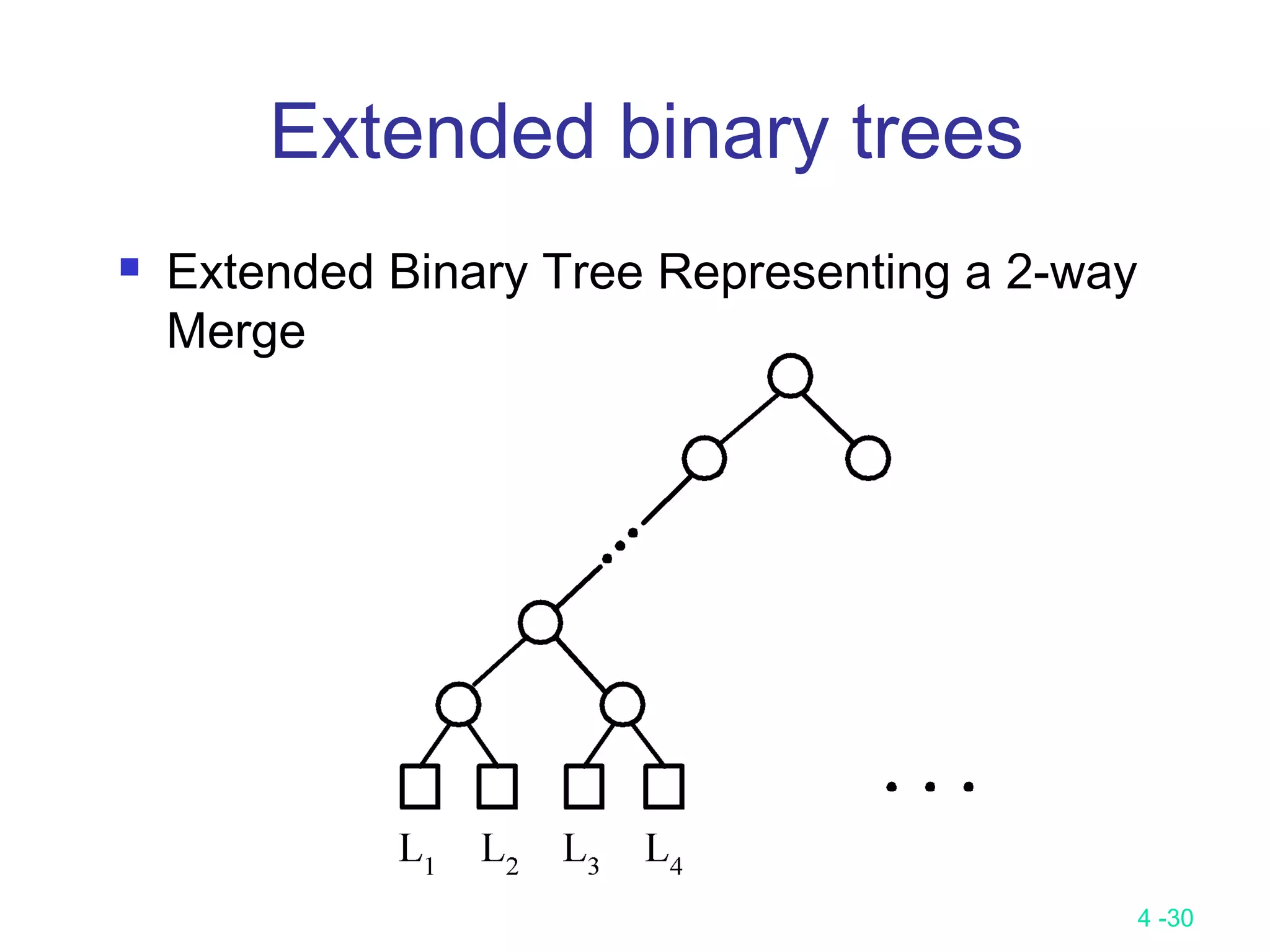
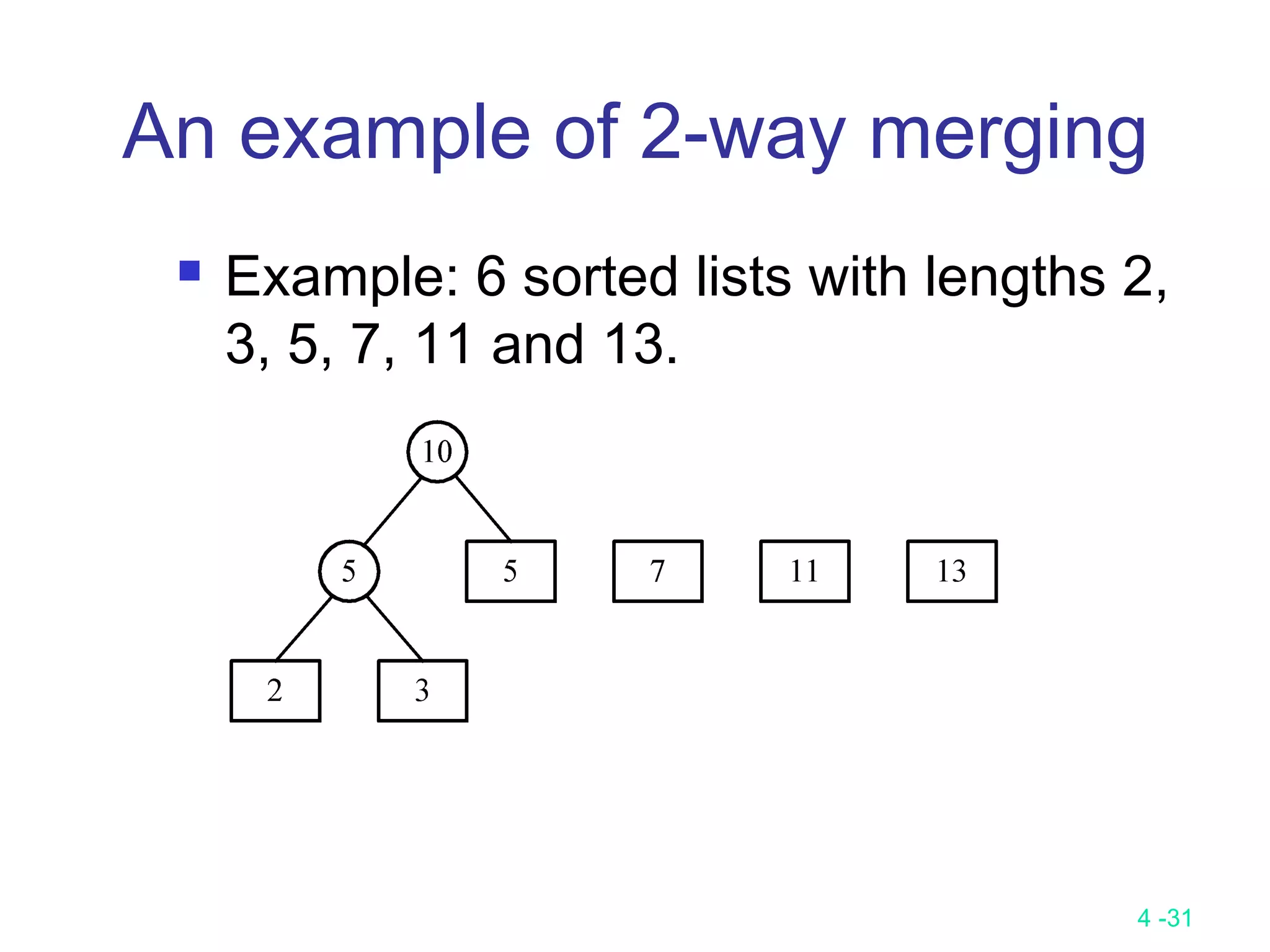

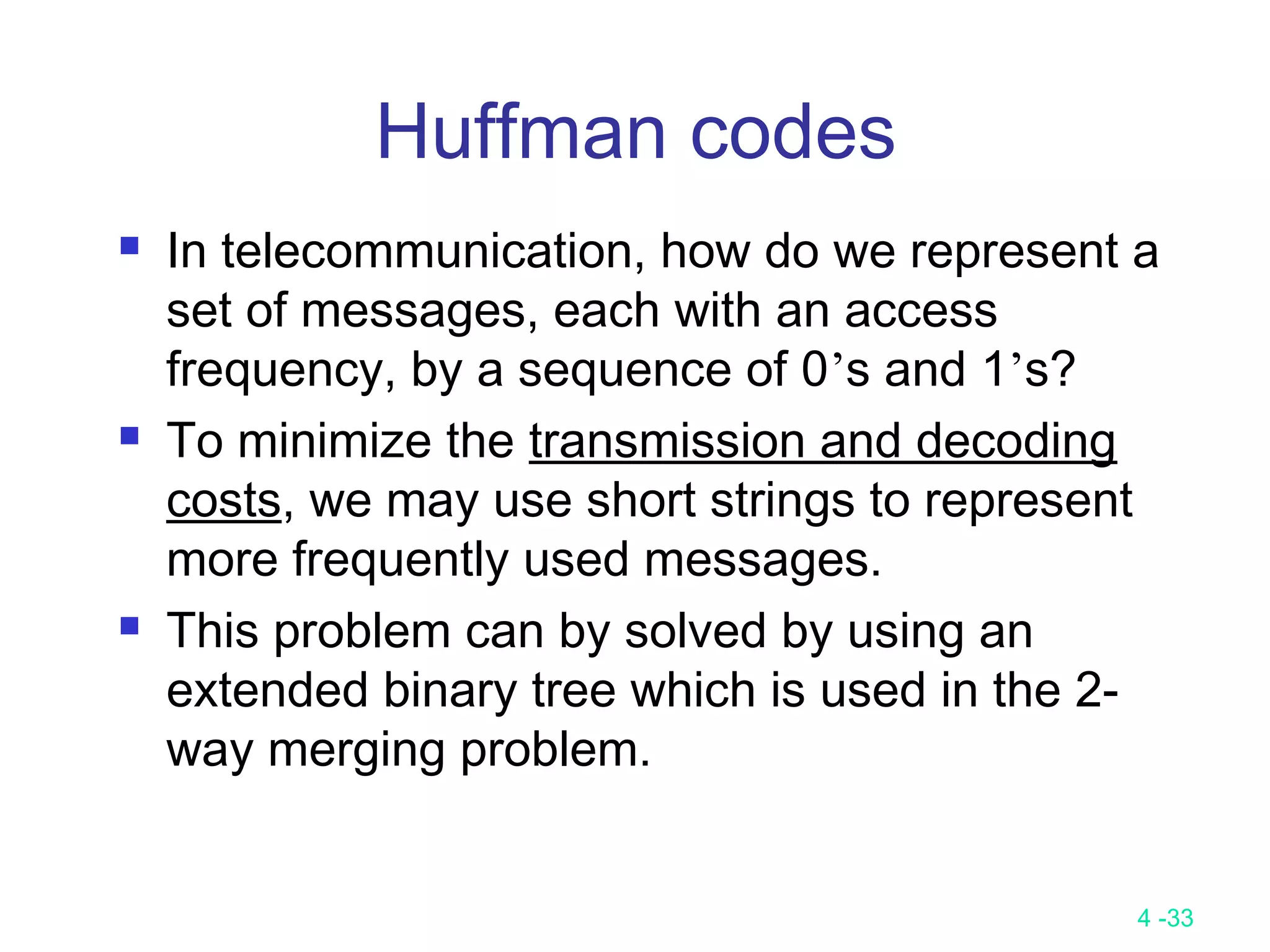
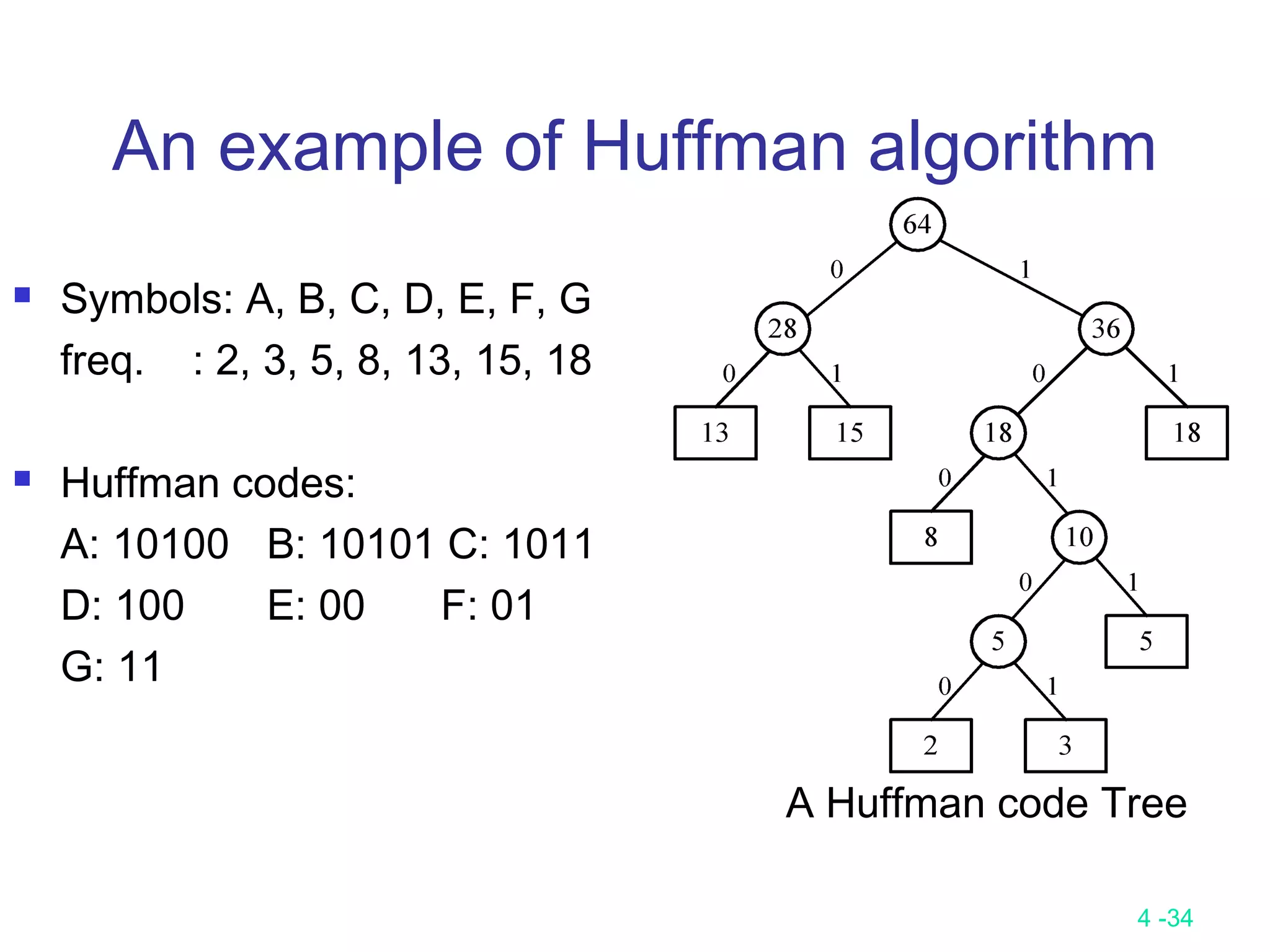
![4 -35
Chapter 4 Greedy method
Input(A[1…n])
Solution ←ψ
for i ← 1 to n do
X ← SELECT(A) ( 最好有一 data structure ,經 preprocessing 後可以很快的找
到 ( 包括 delete))
If FEASIBLE( solution, x)
then solution ← UNION( select, x)
endif
repeat
Output (solution)
特點
(1) 做一串 decision
(2) 每個 decision 只關心自己是不是 optimal 一部份與其它無關 ( 可以 local
check)
Note
(1) Local optimal 須是 global optimal
(2) 有時裡面隱含一個 sorting](https://image.slidesharecdn.com/lecture9-161204094314/75/Lecture-9-35-2048.jpg)
